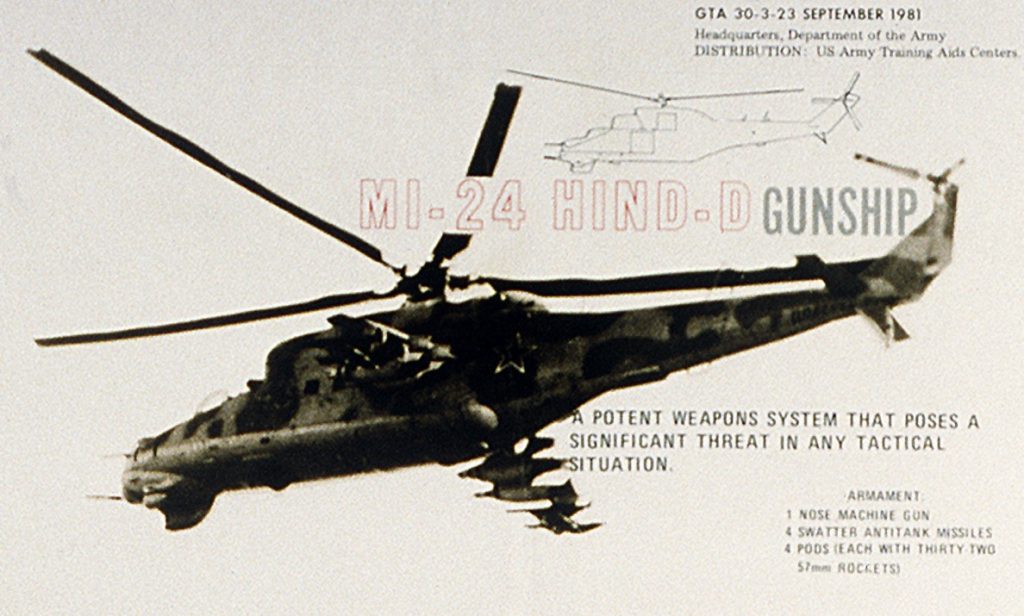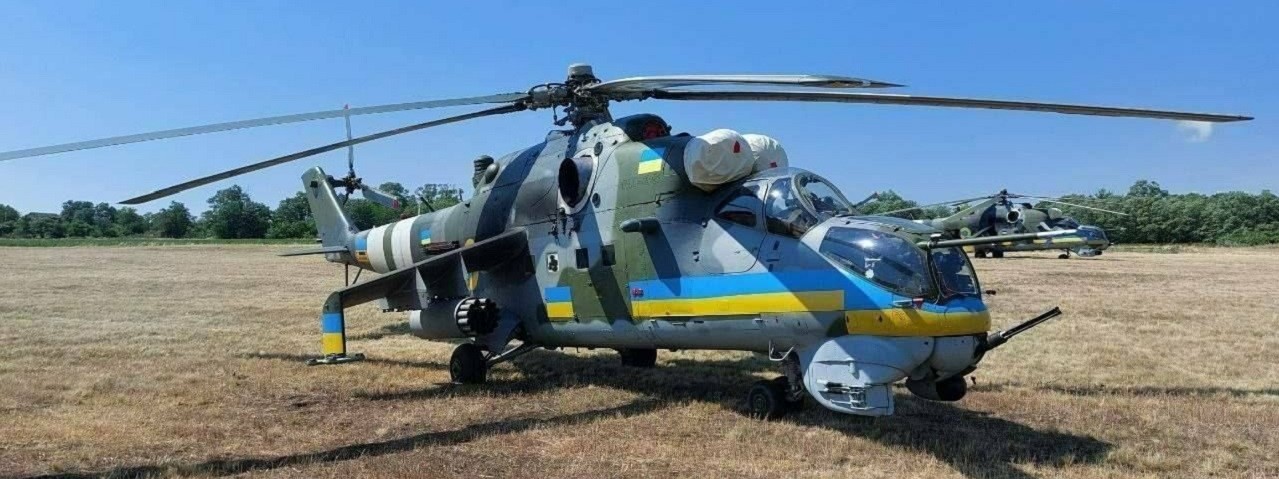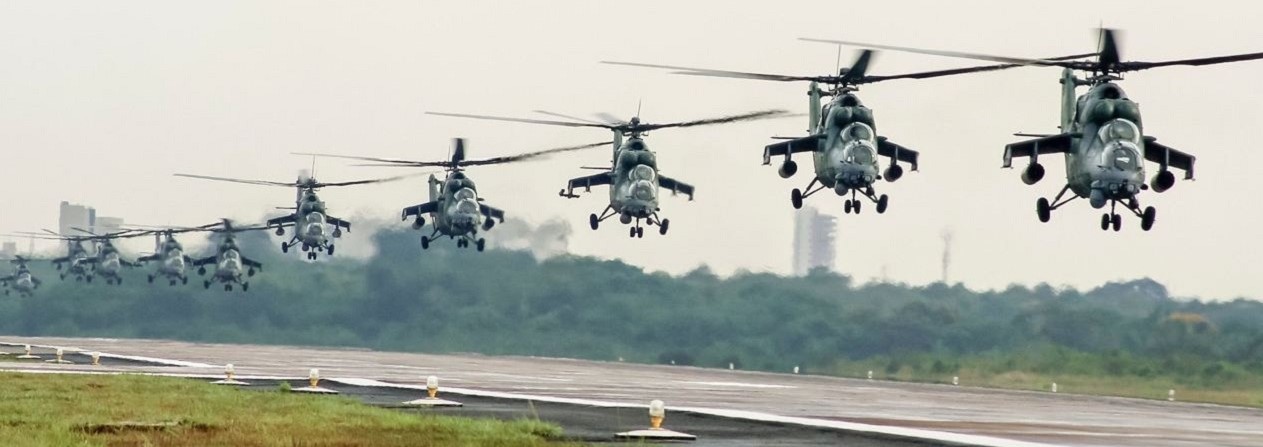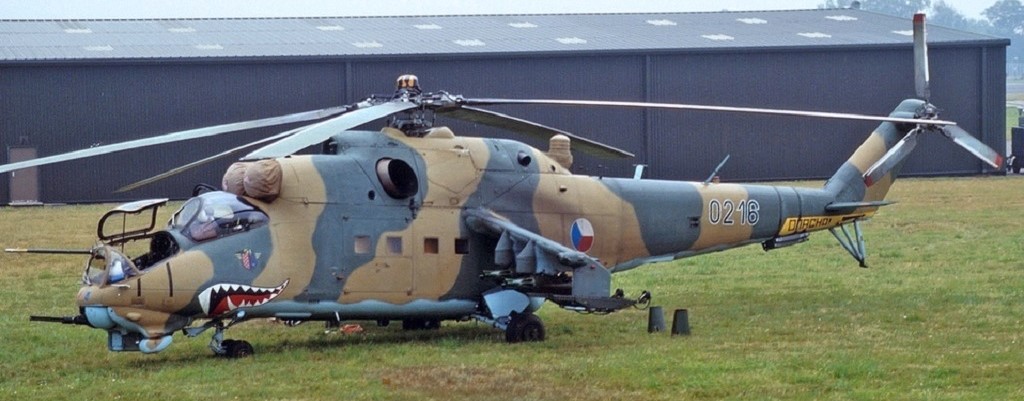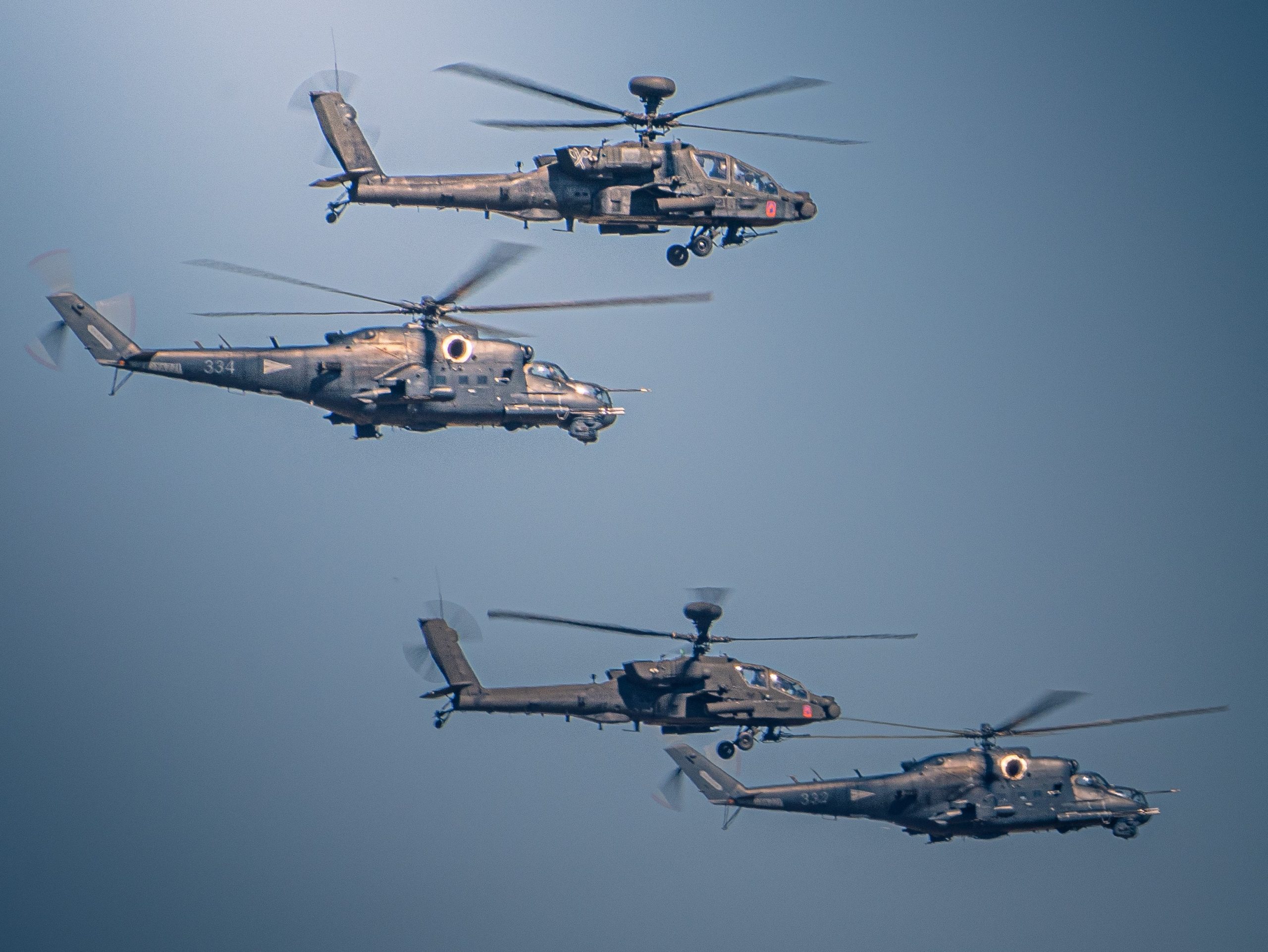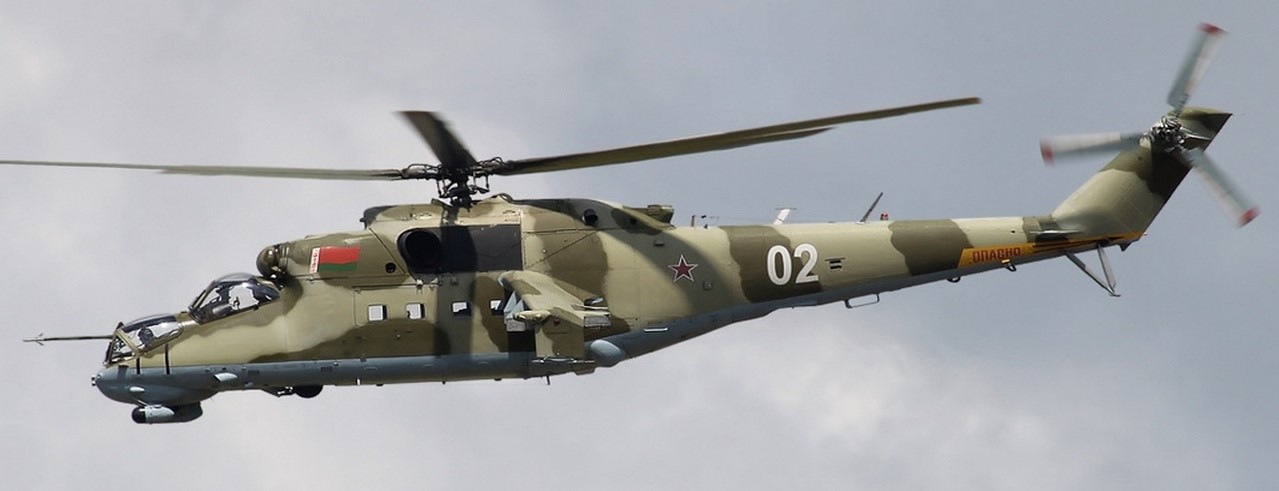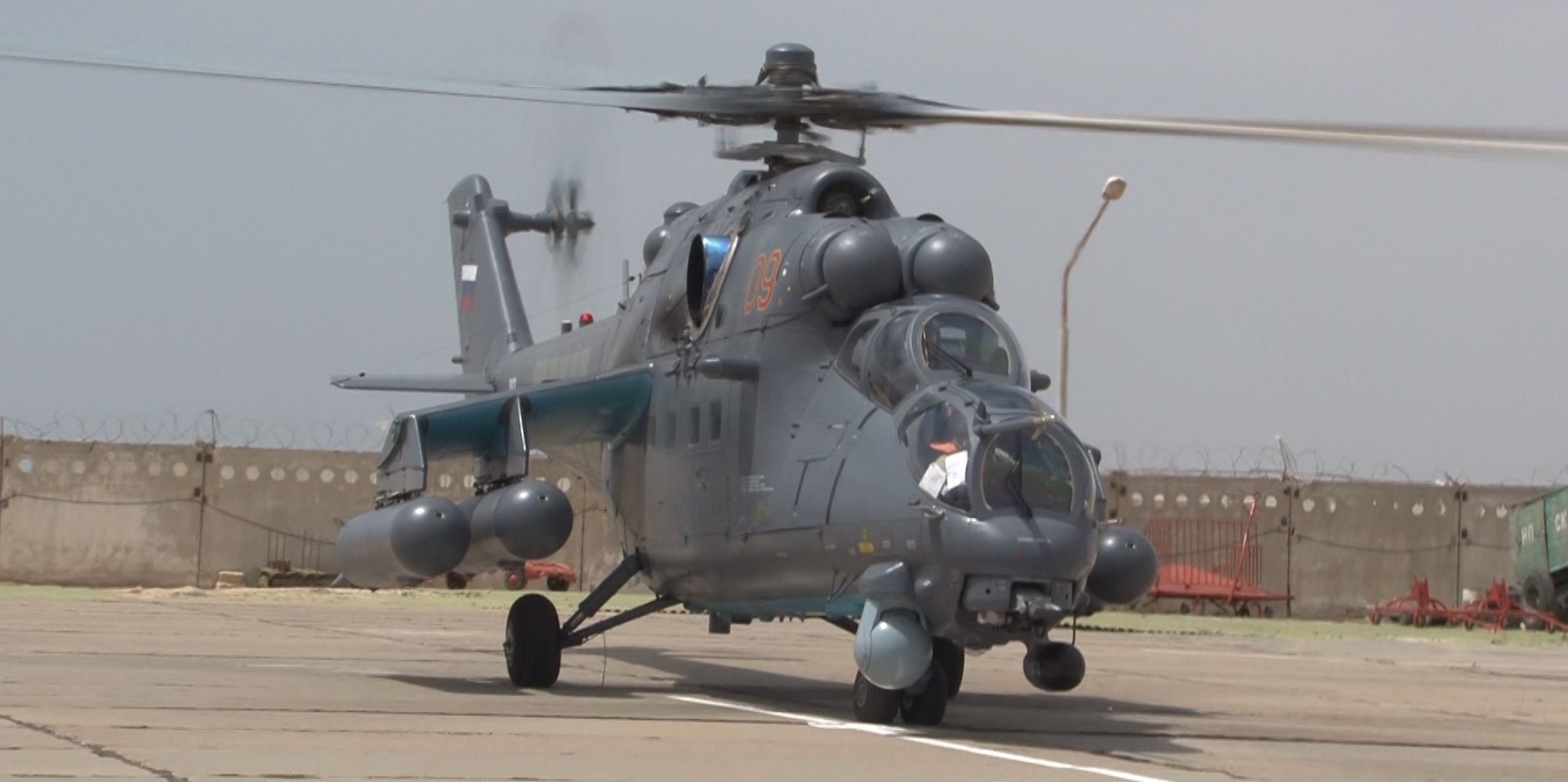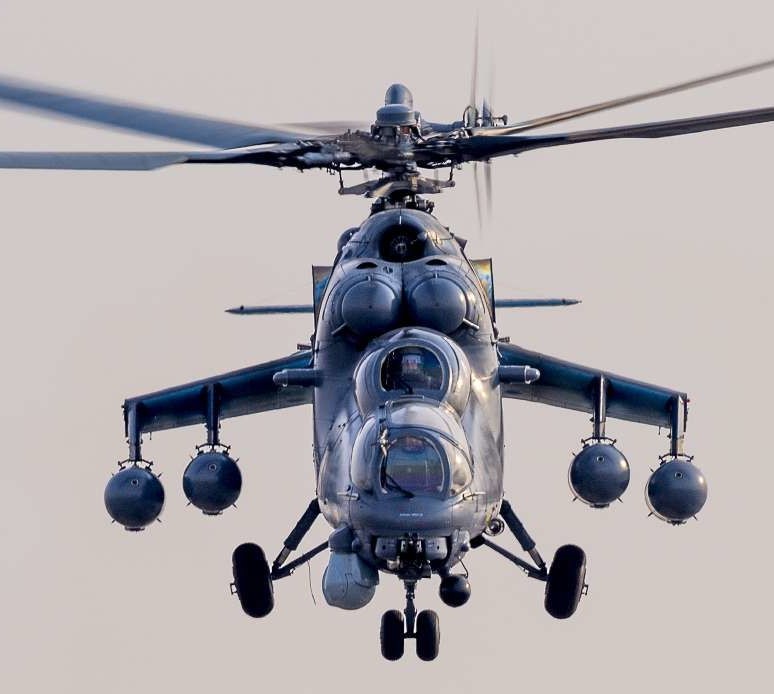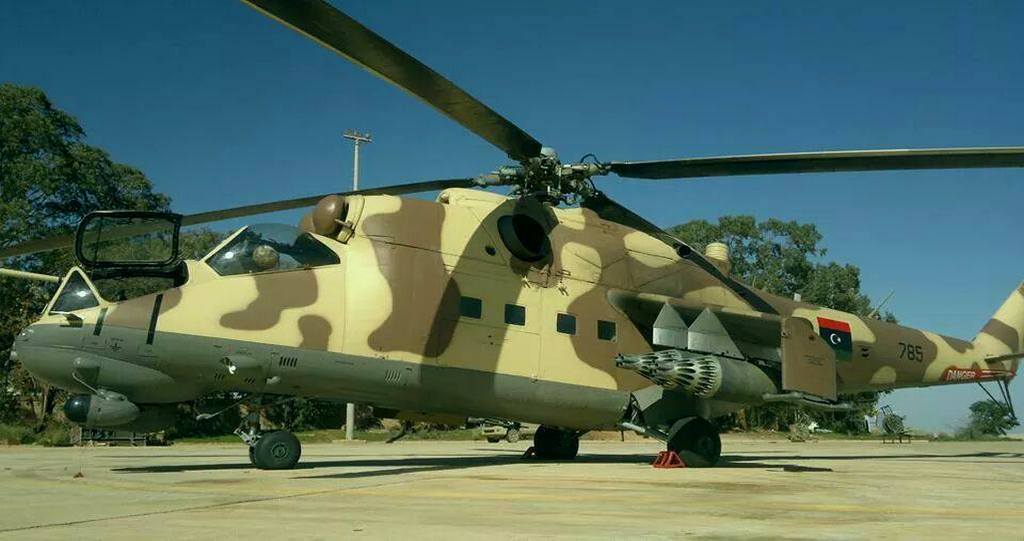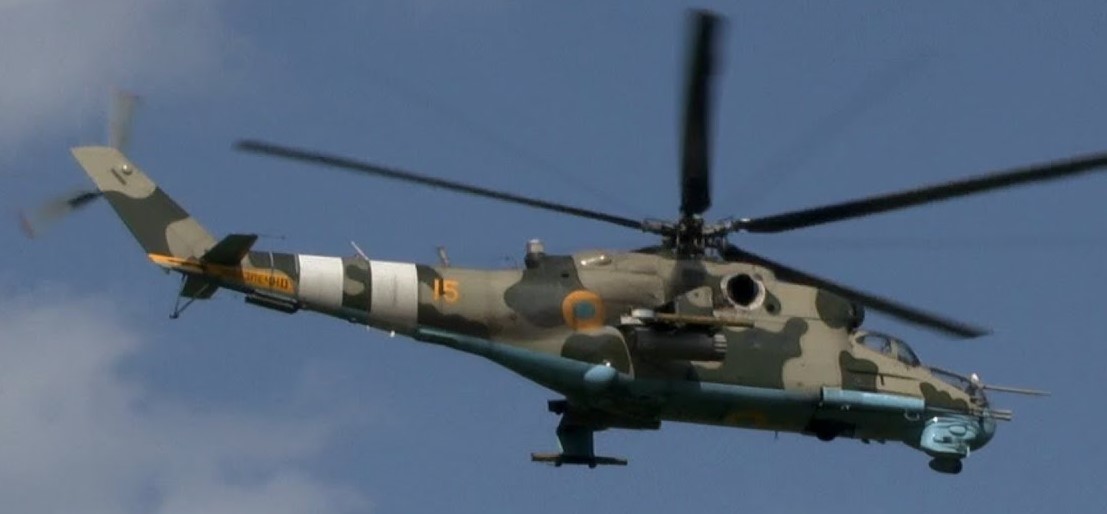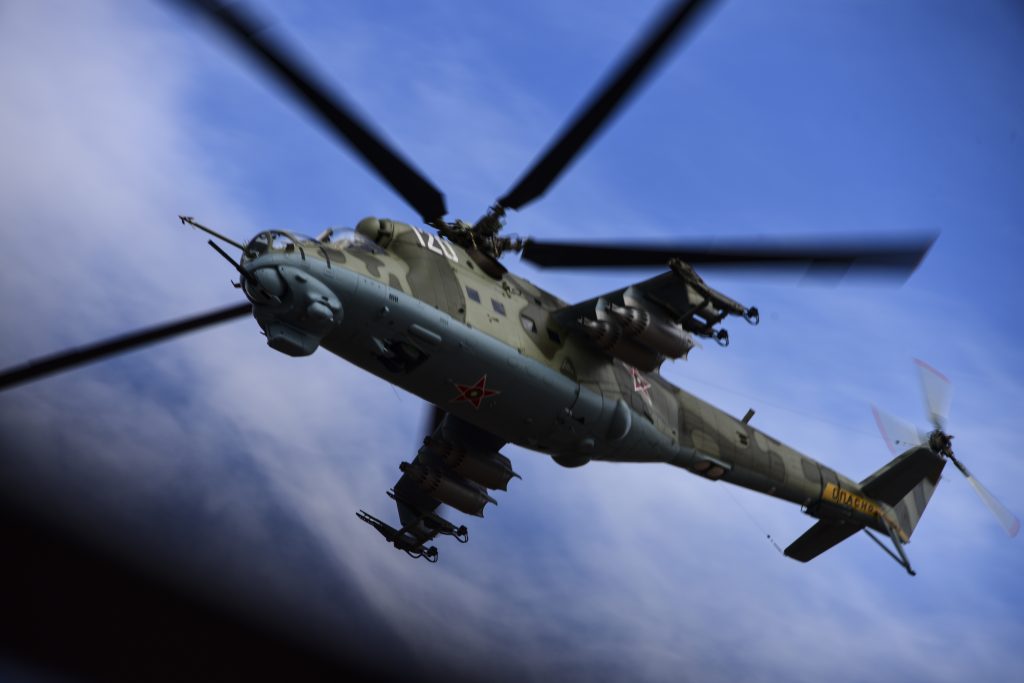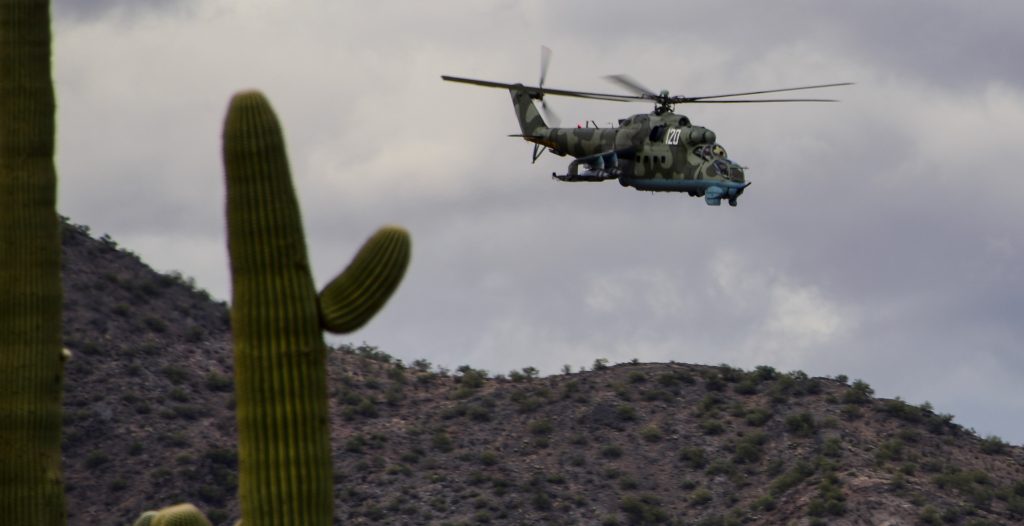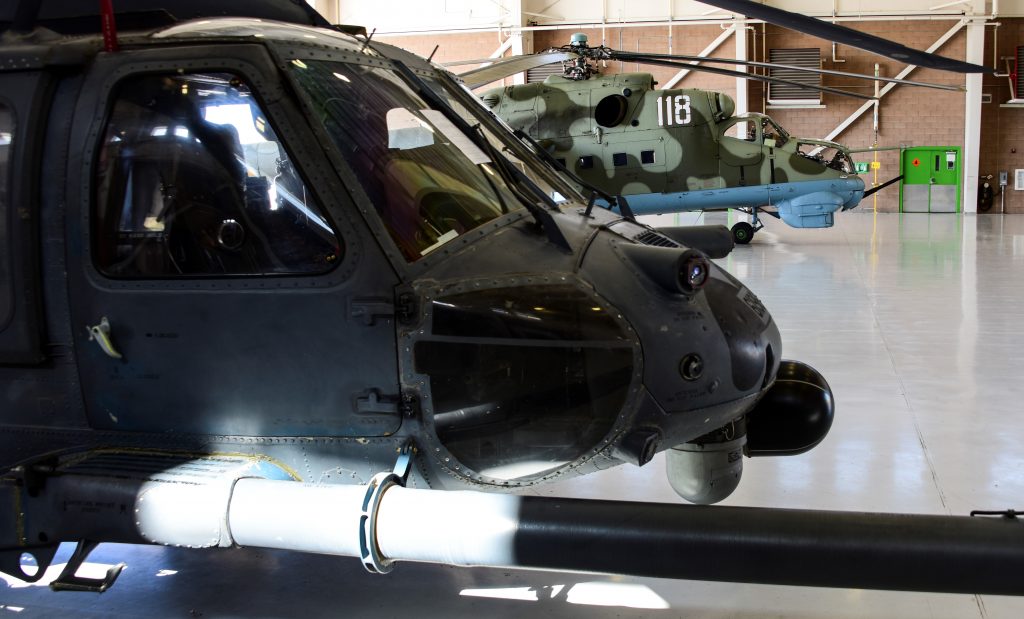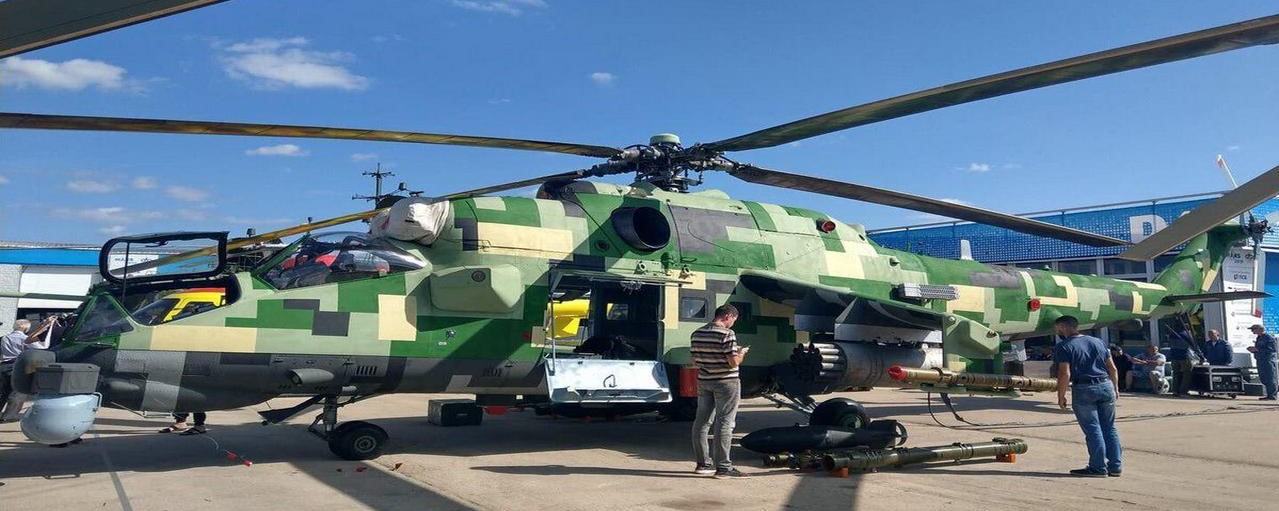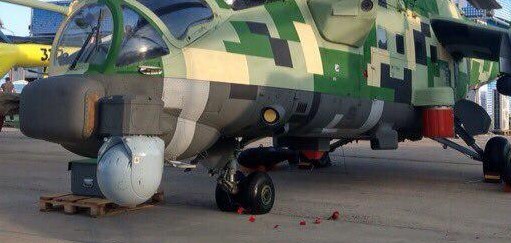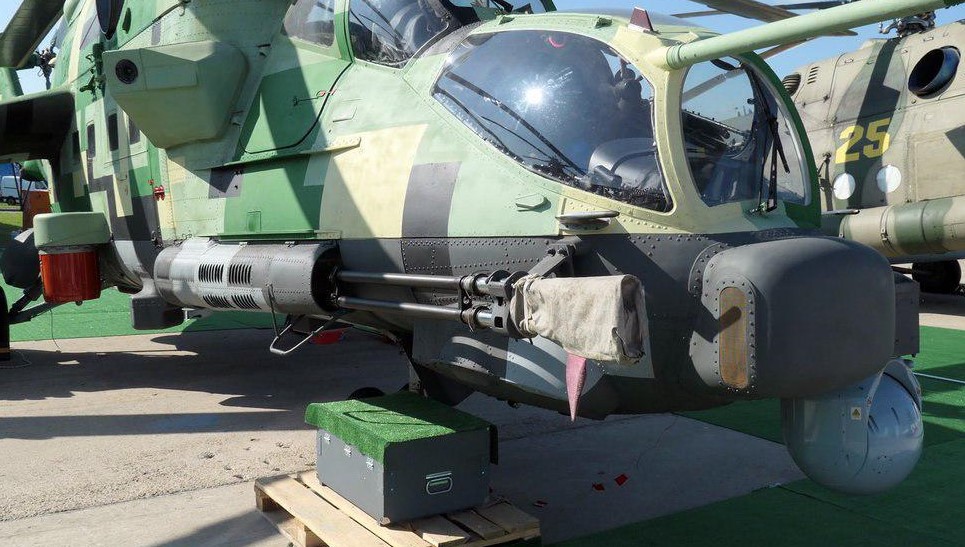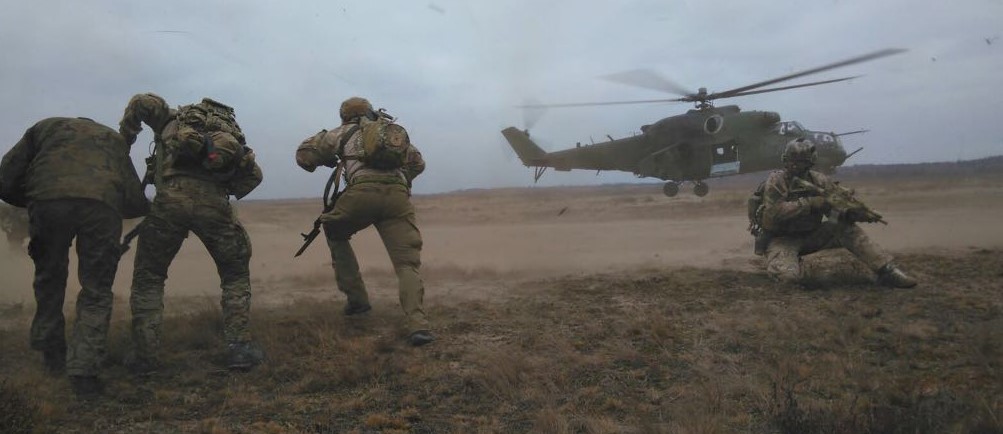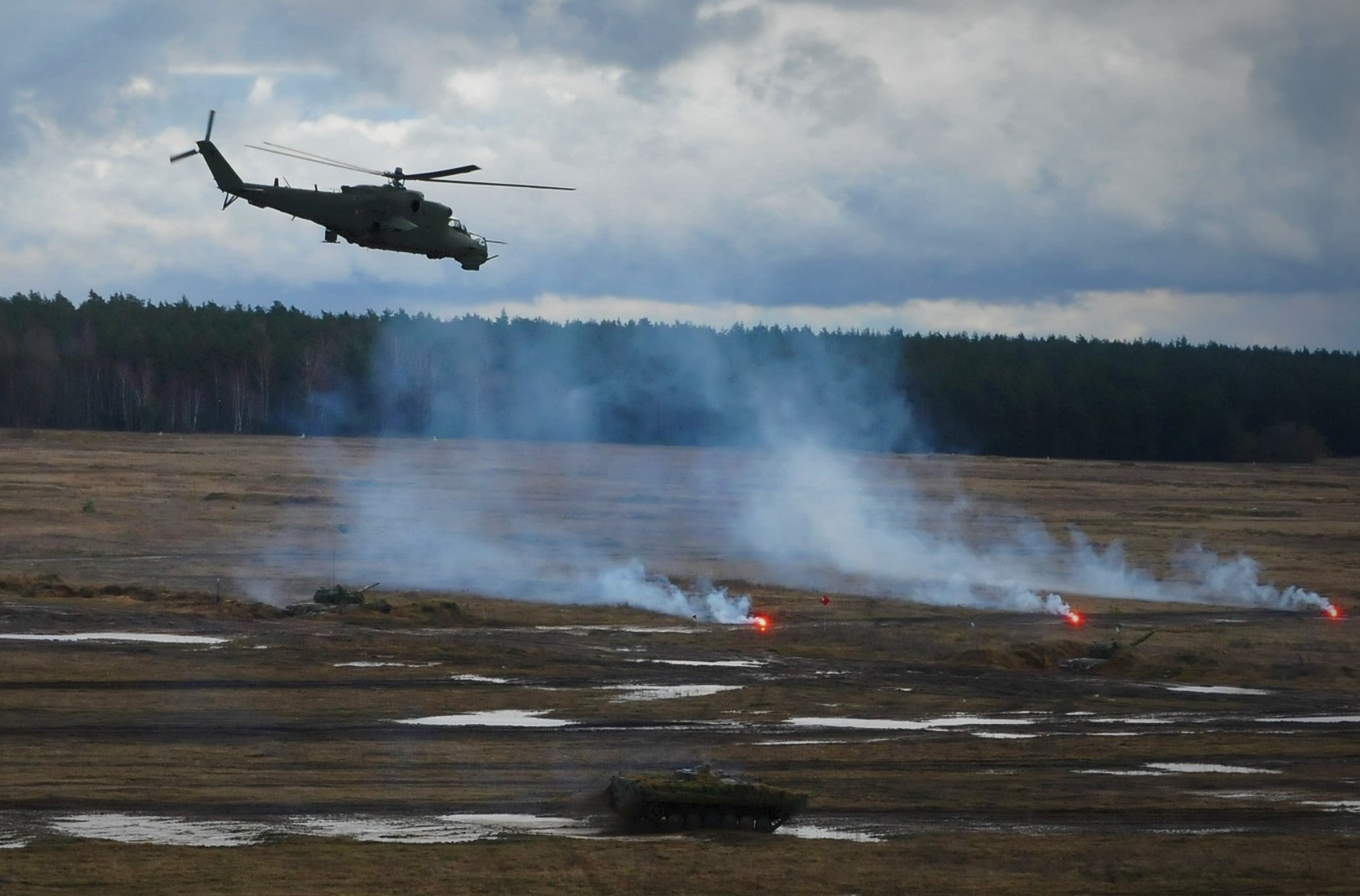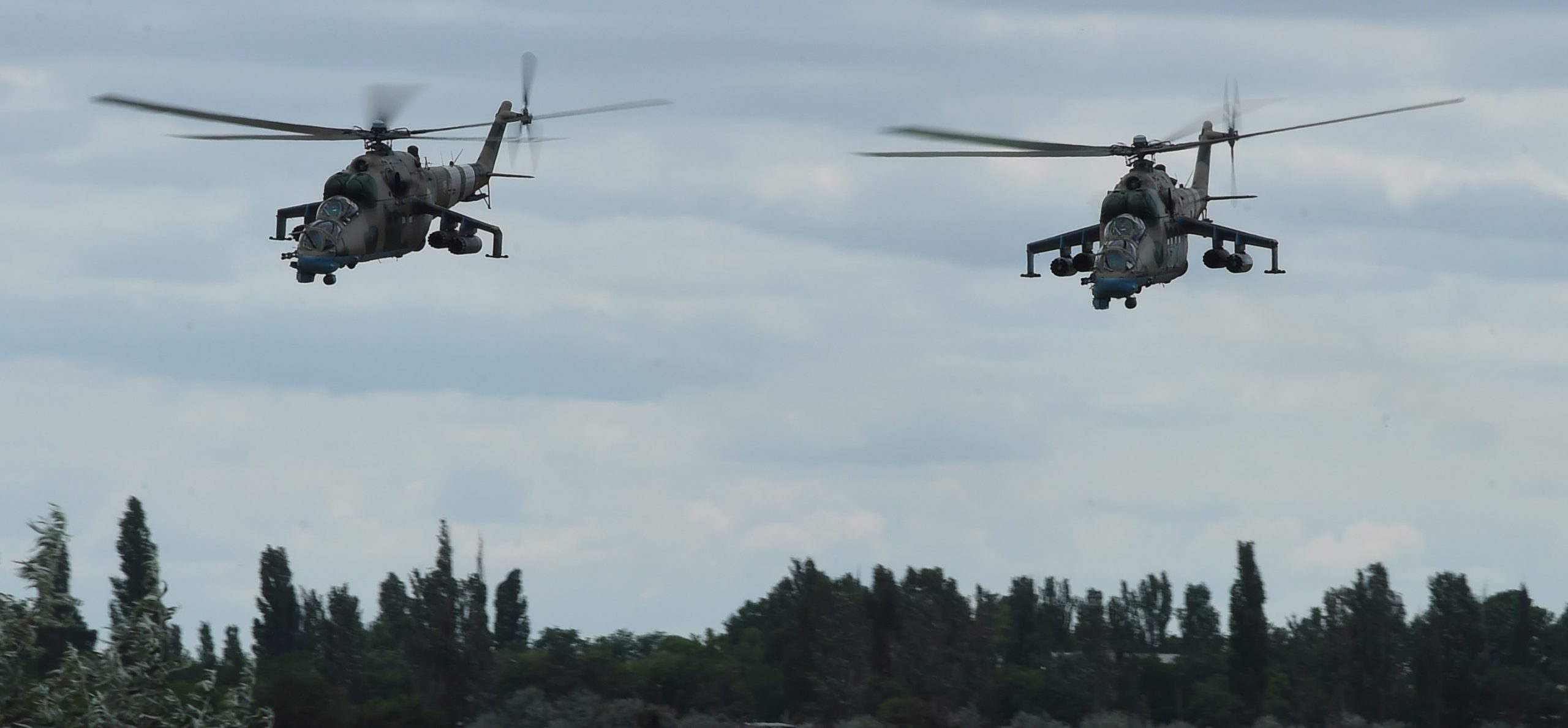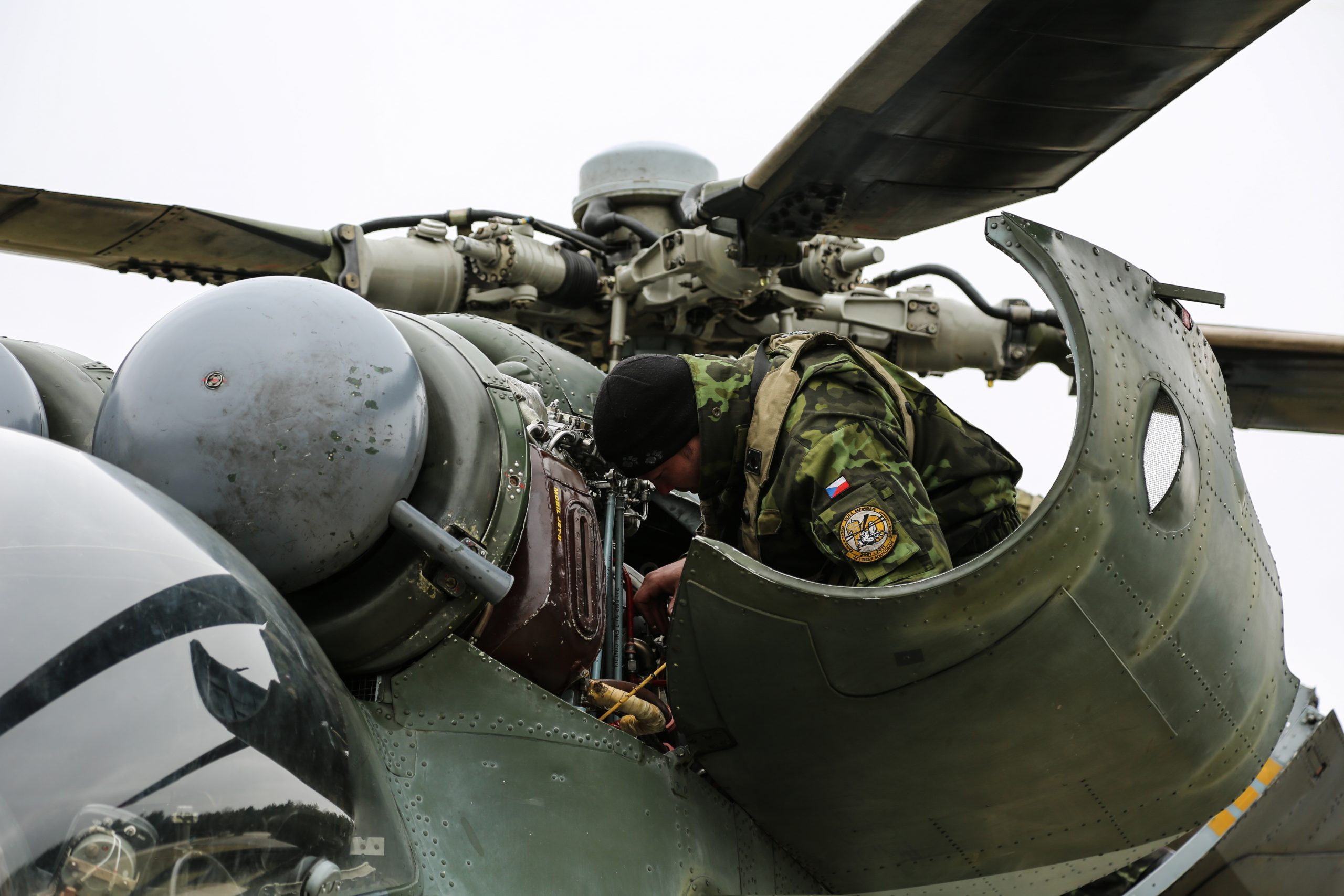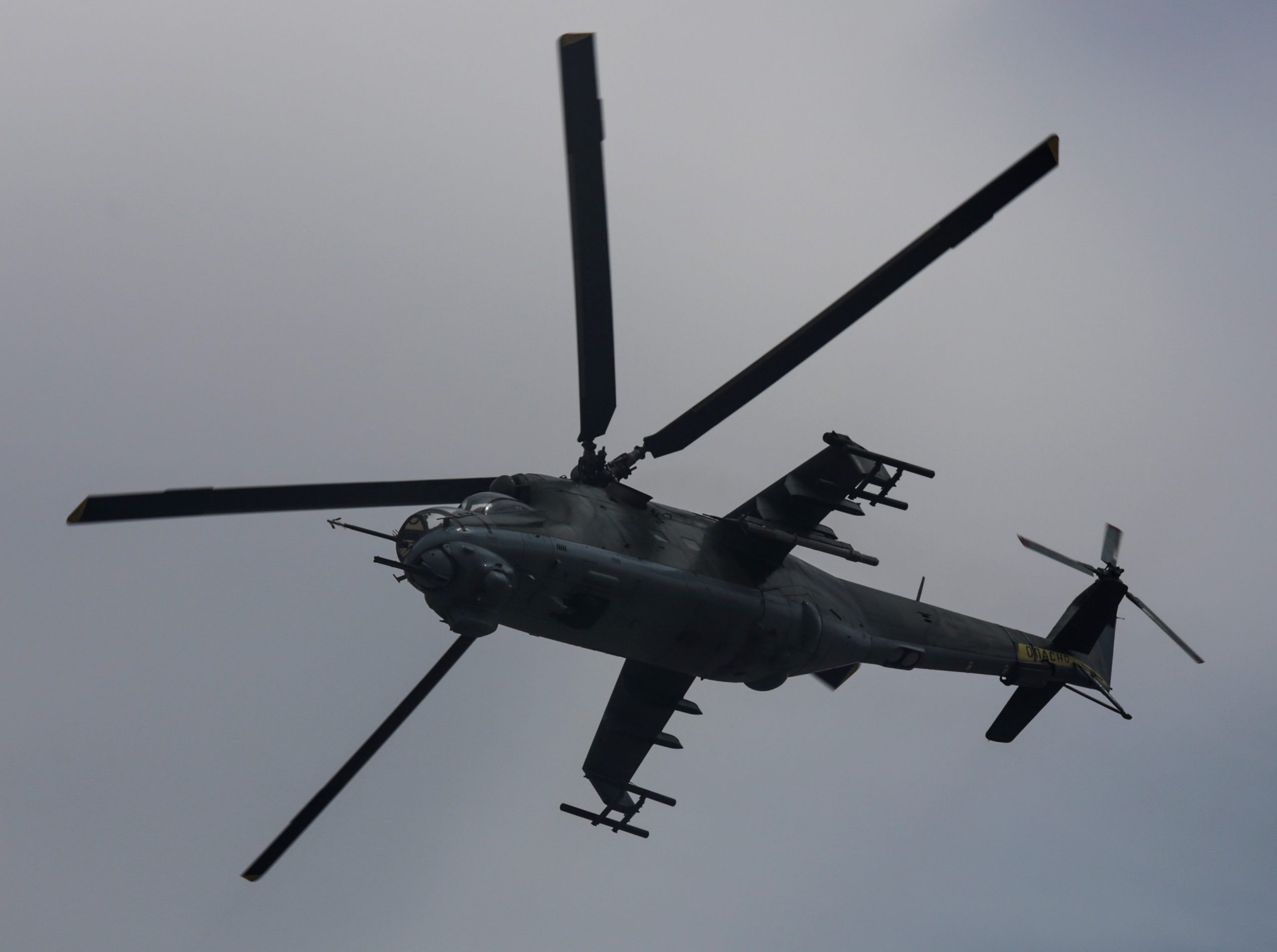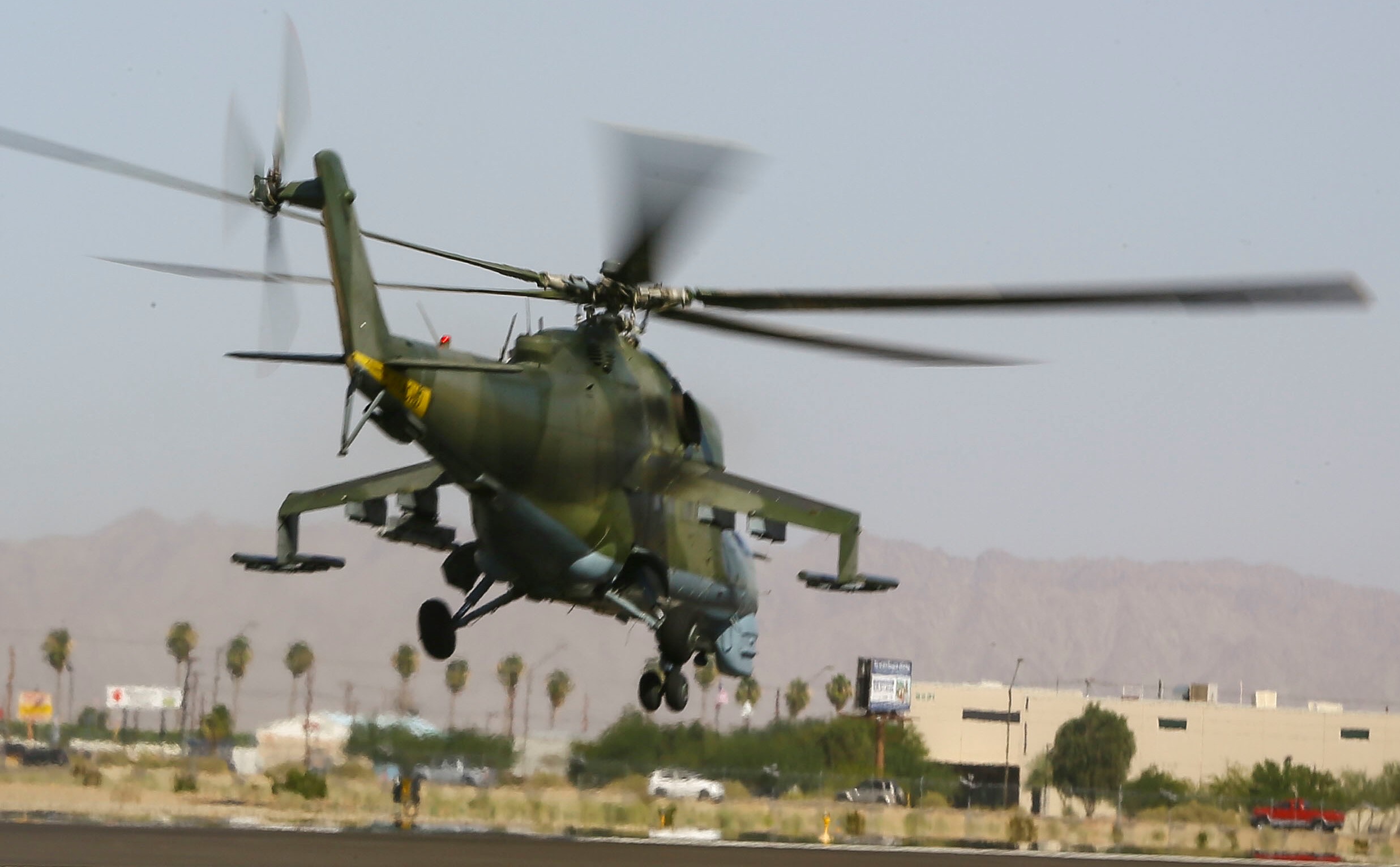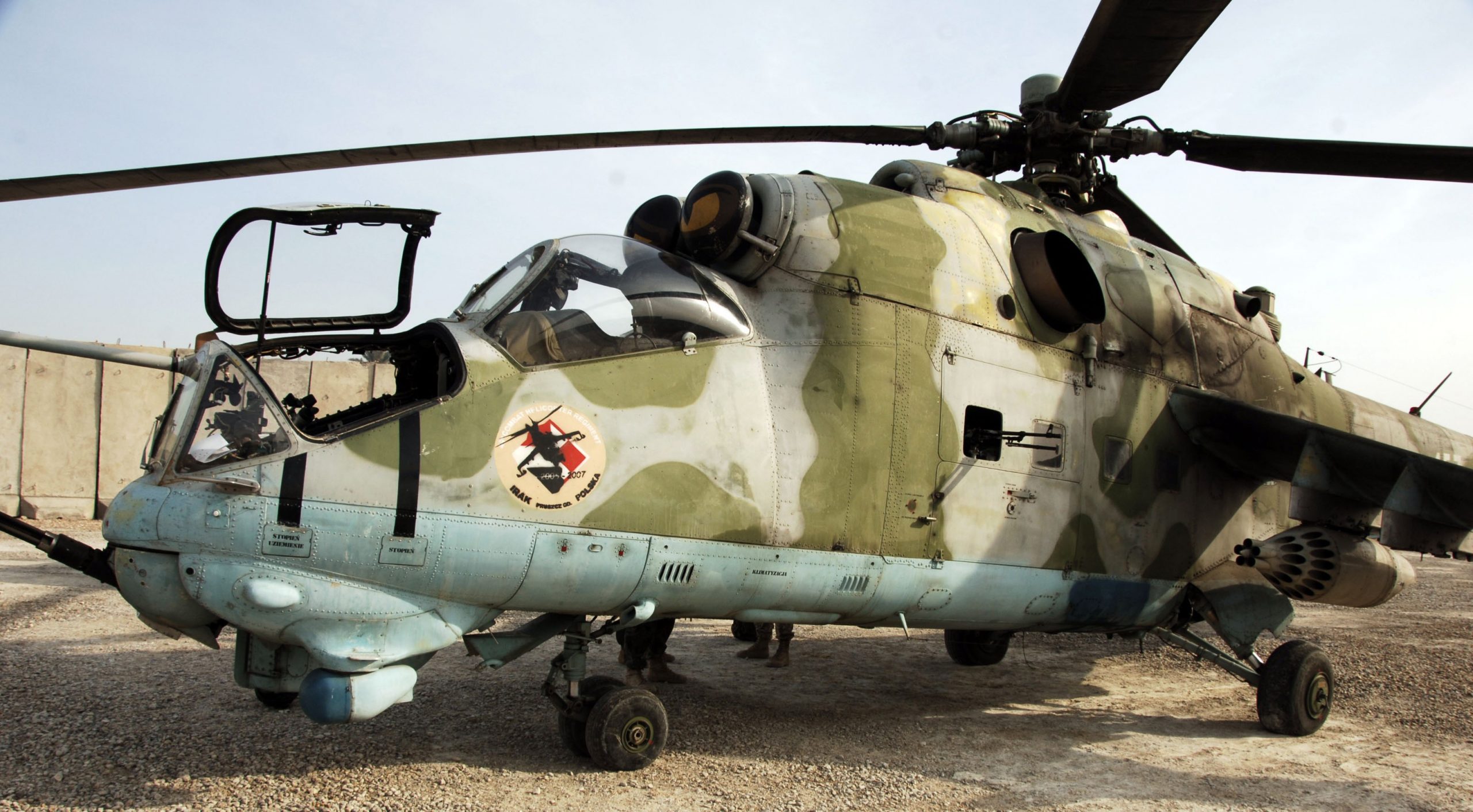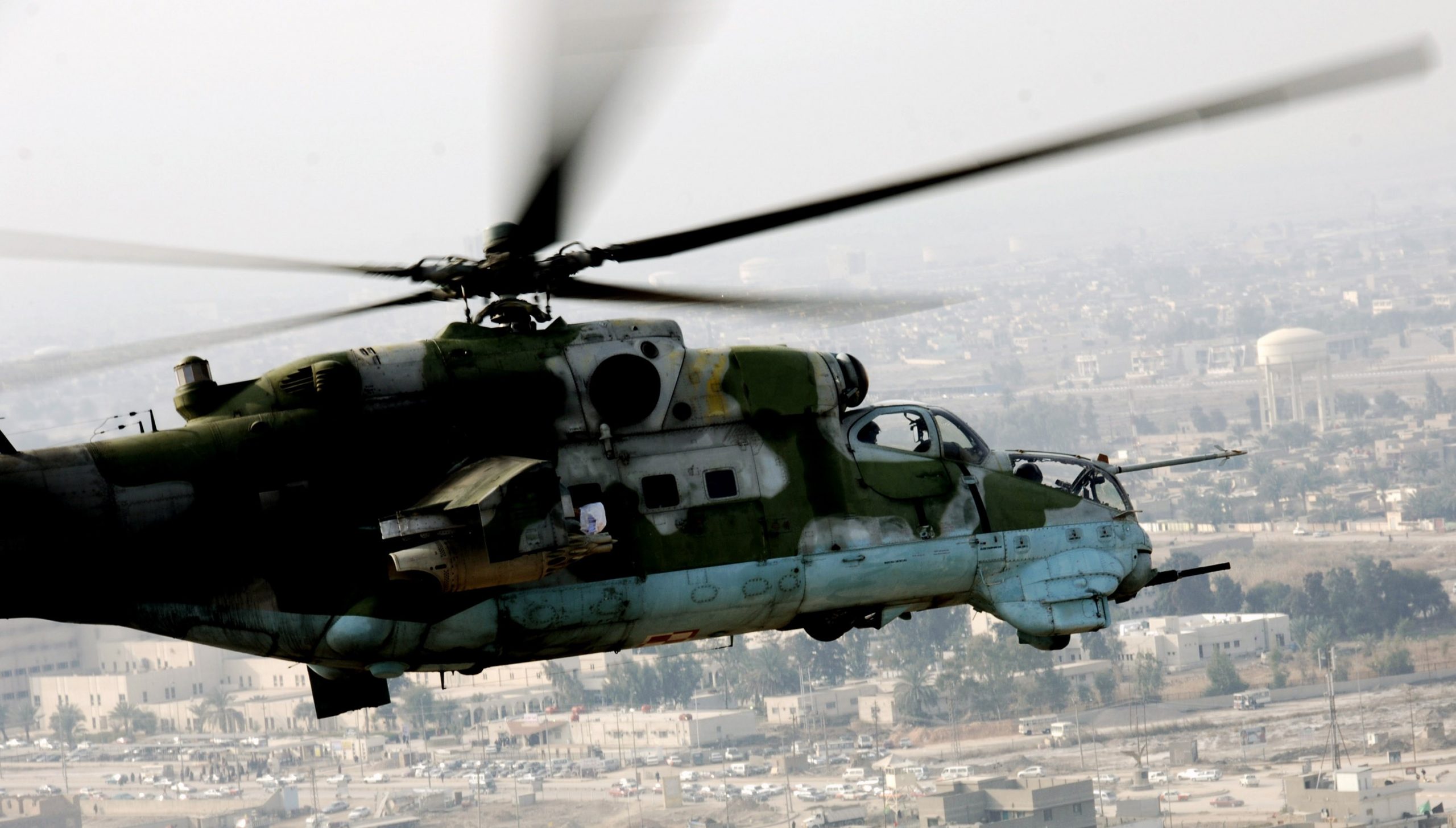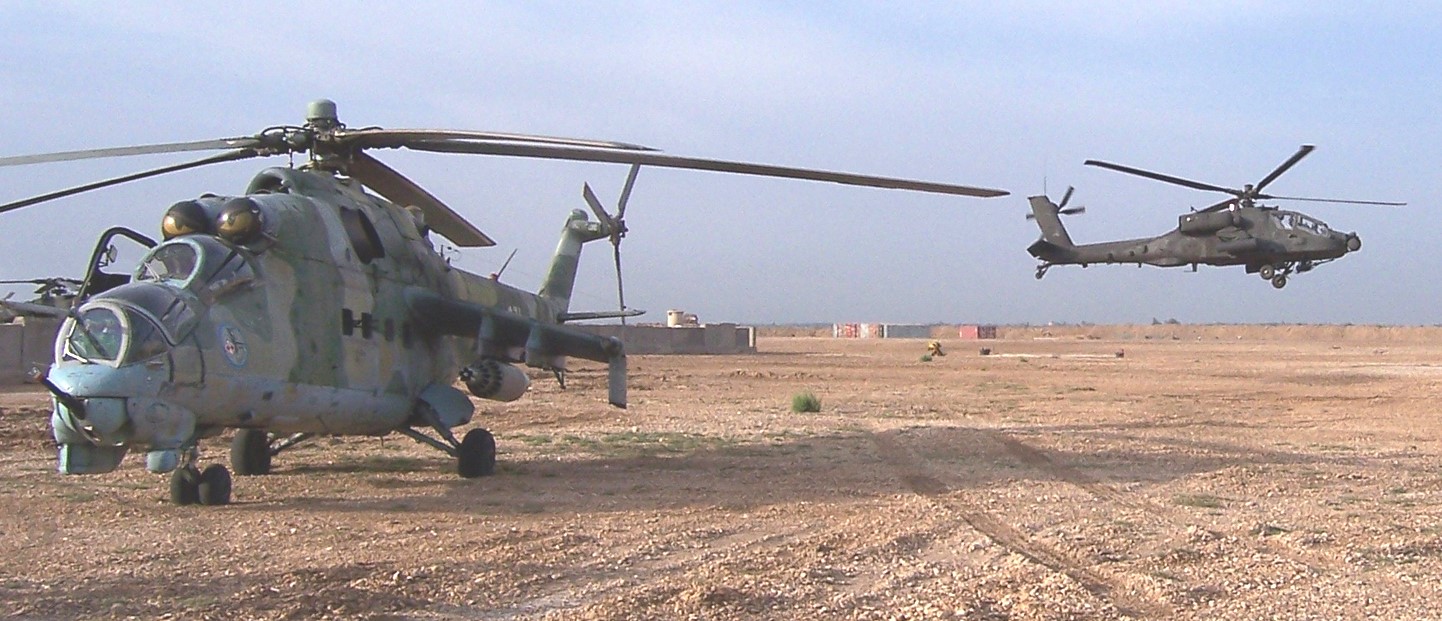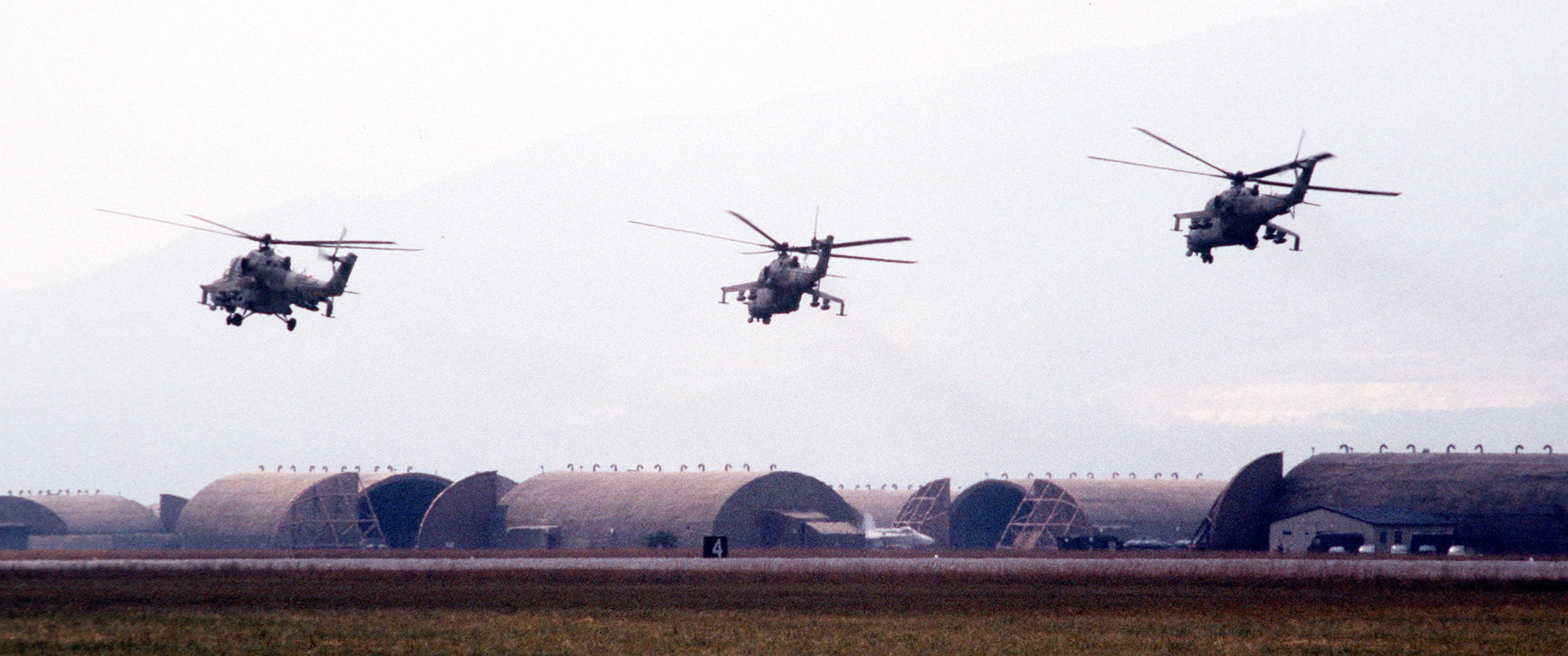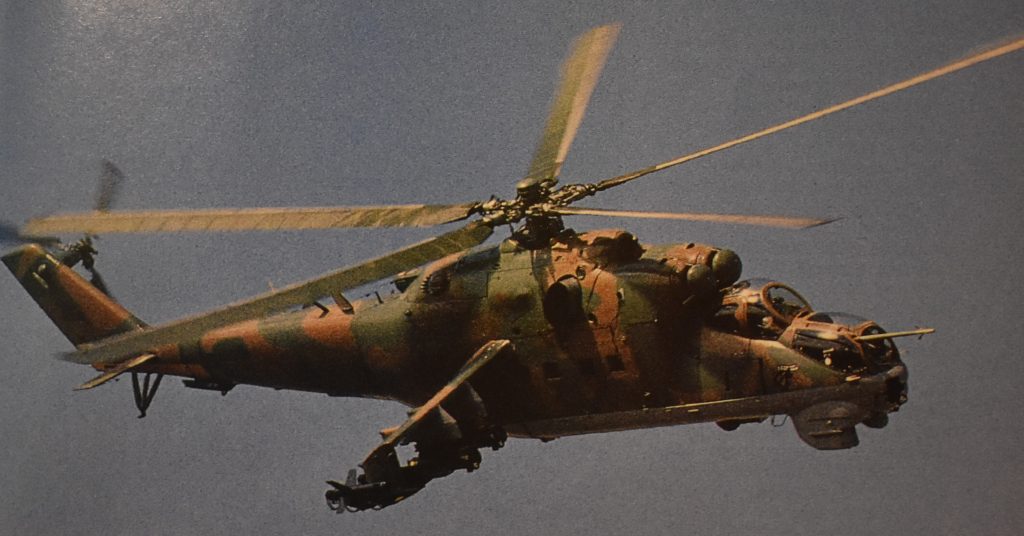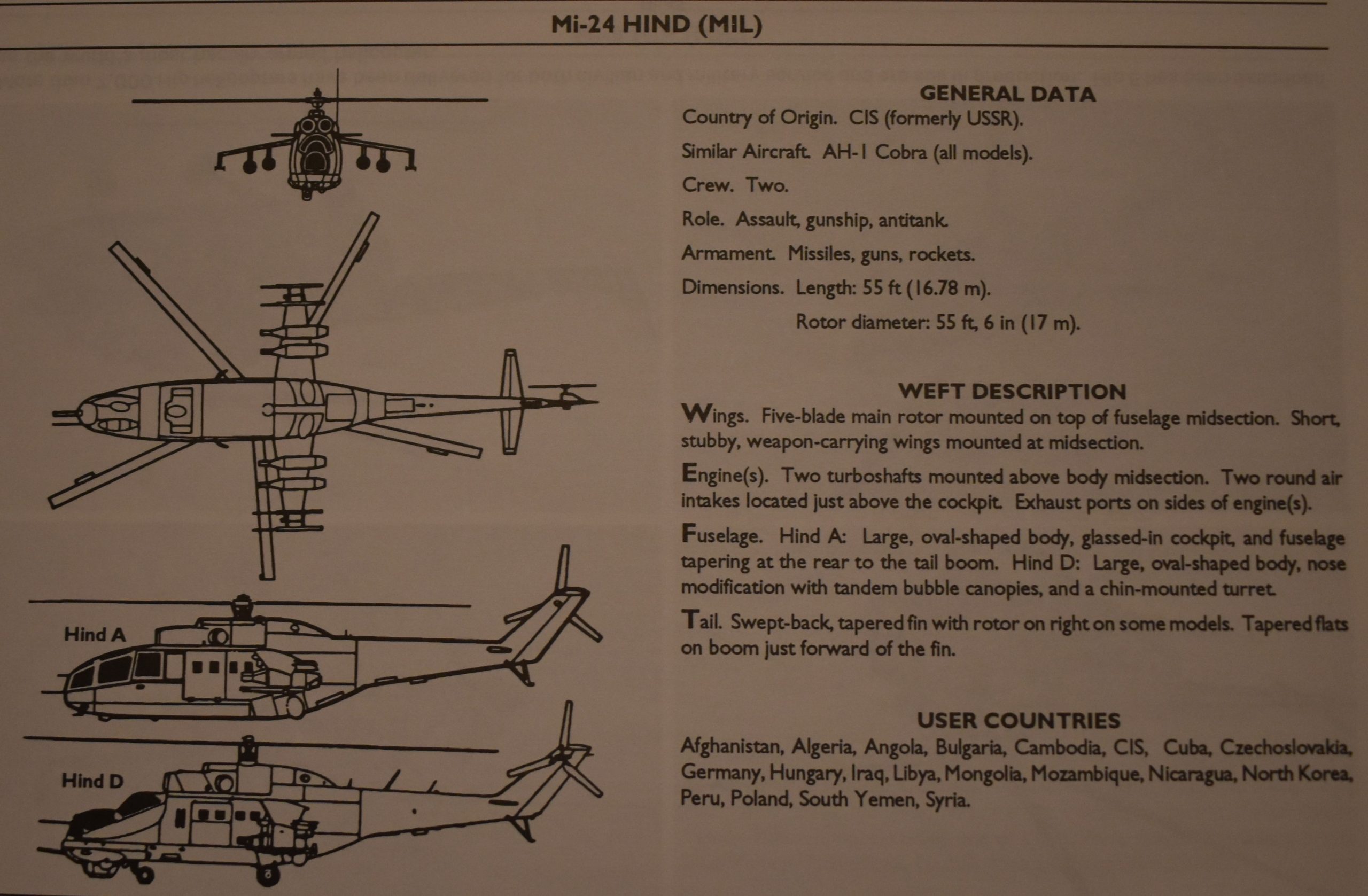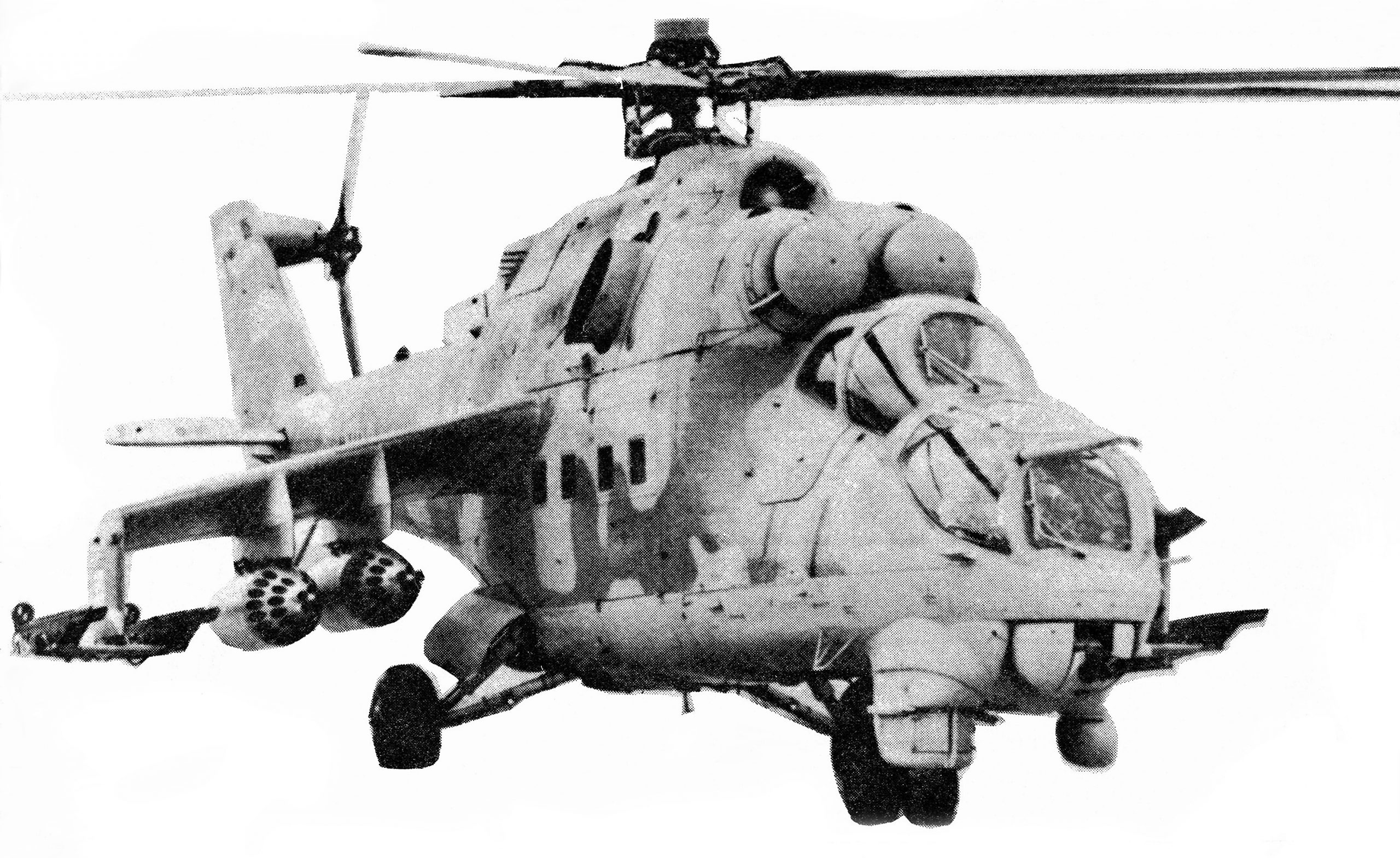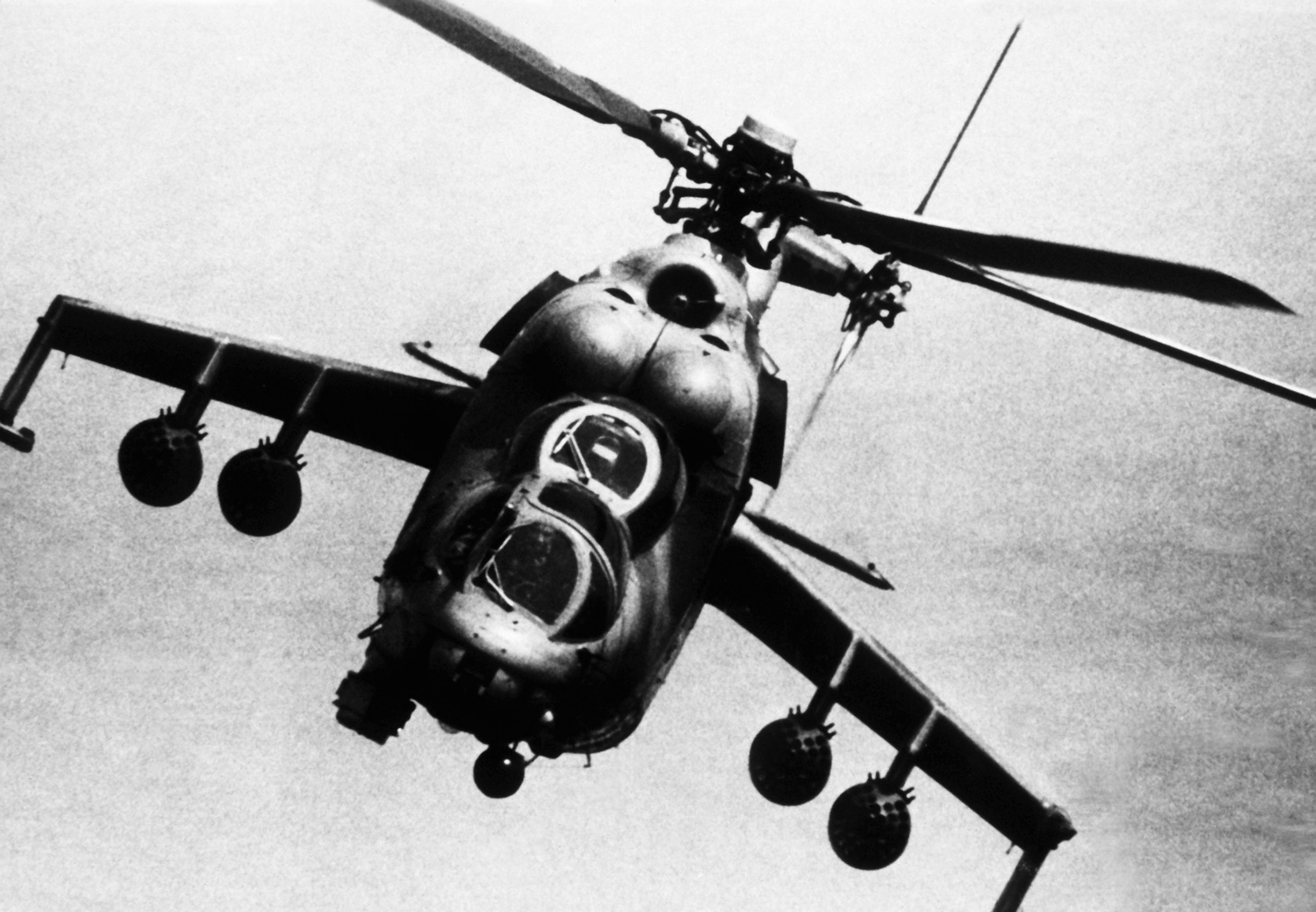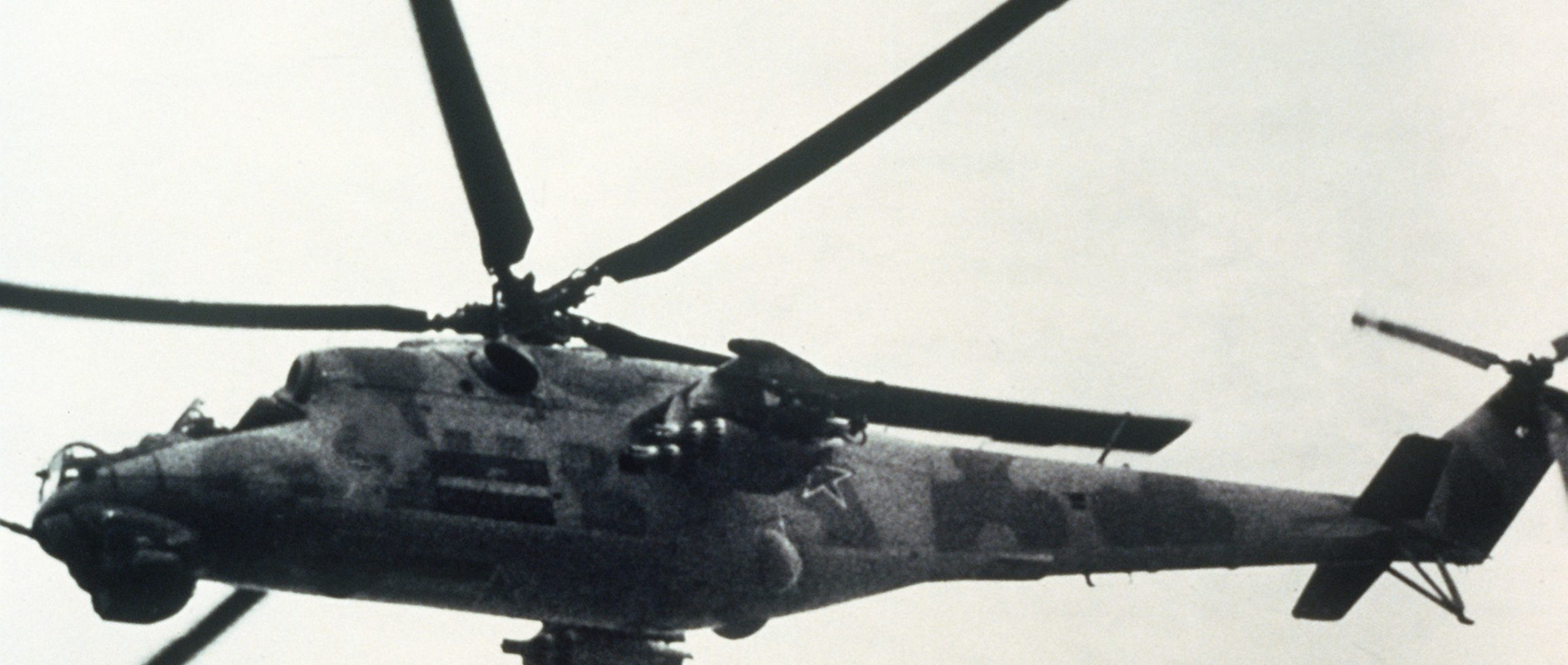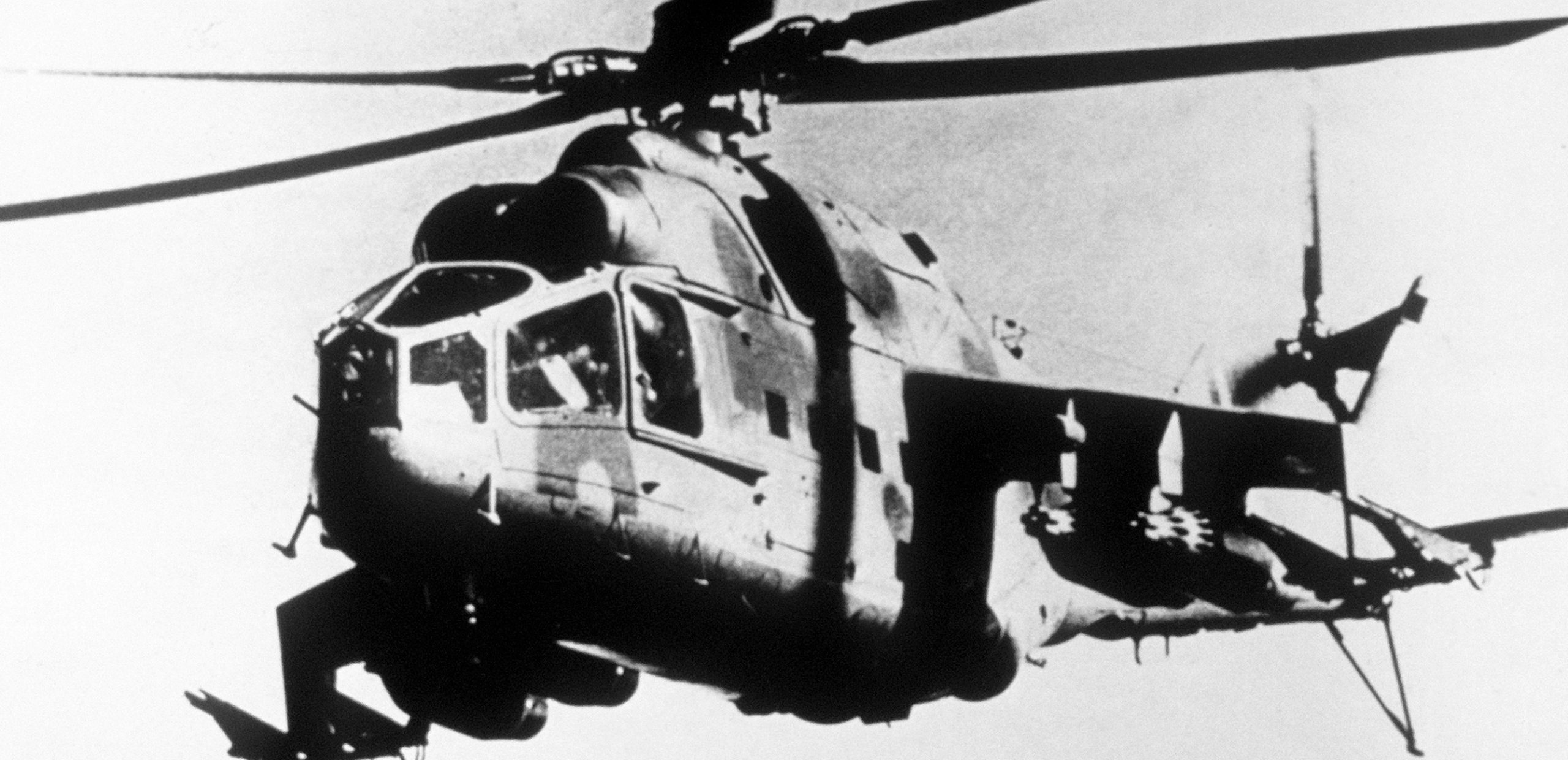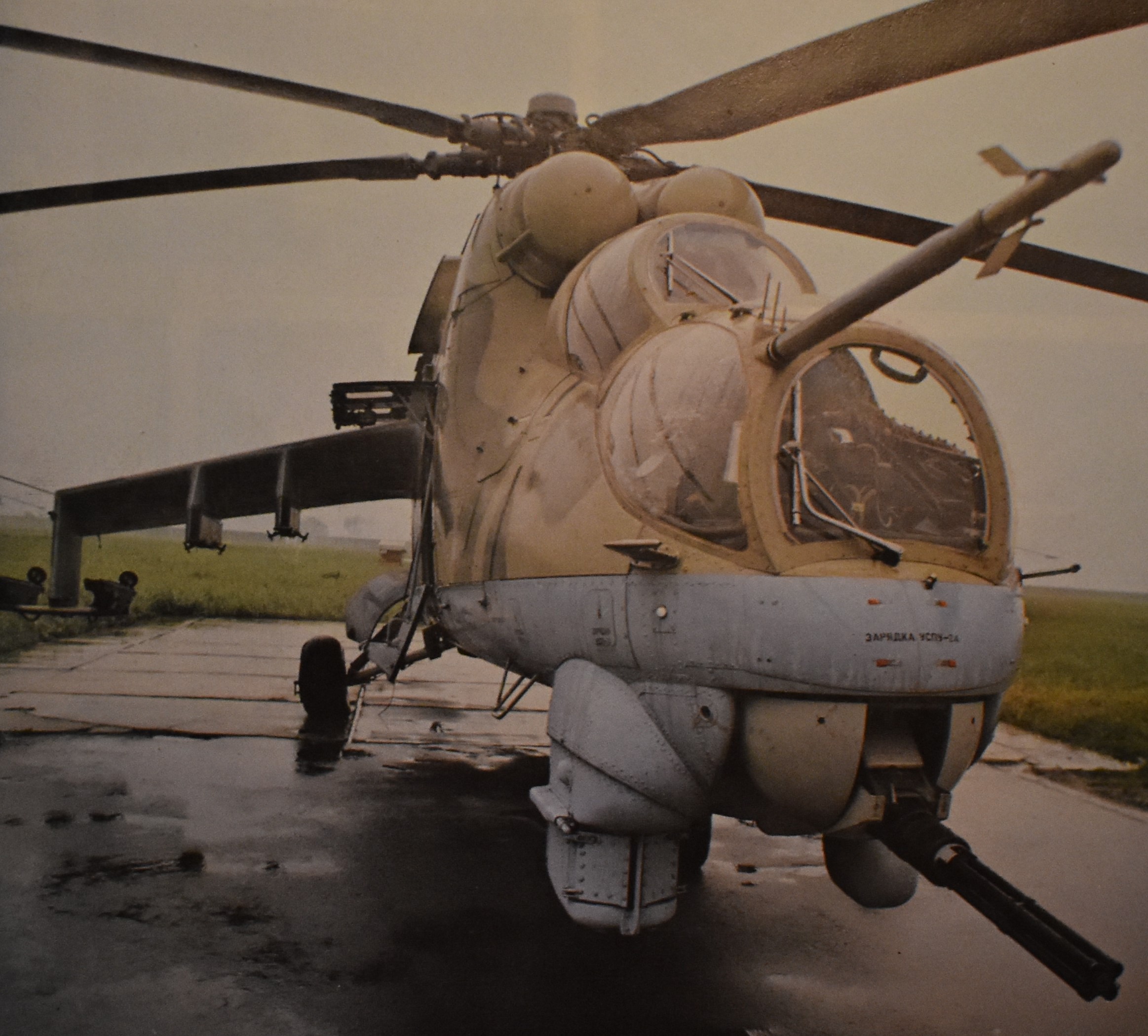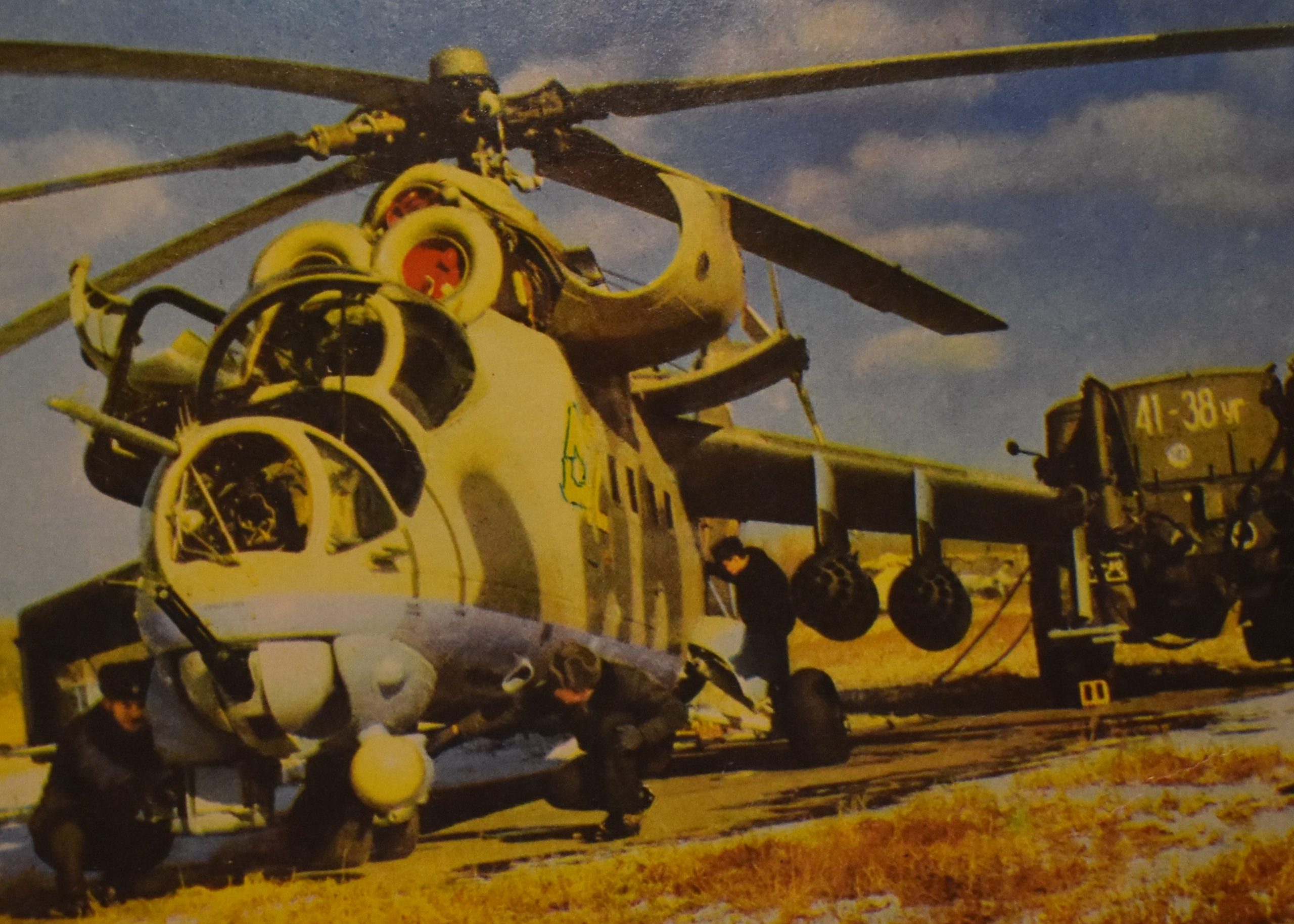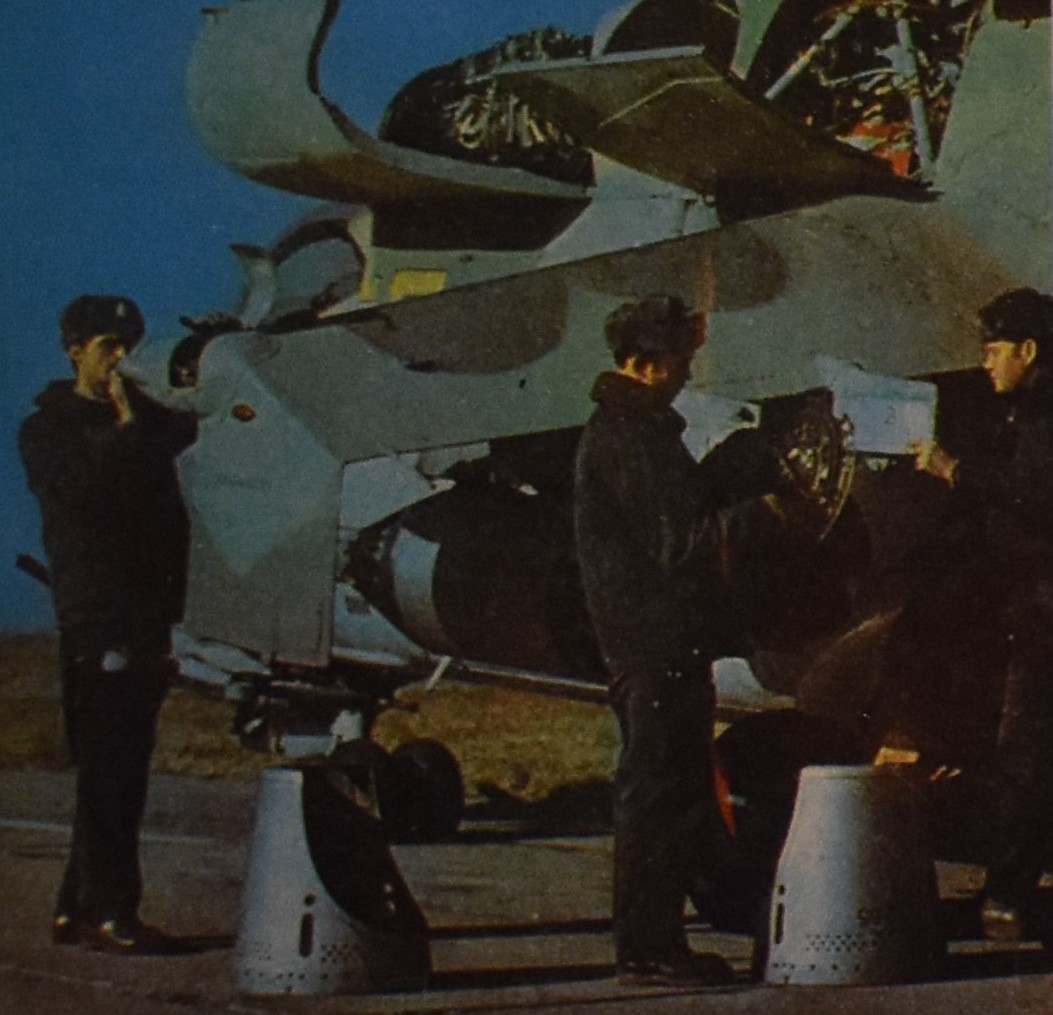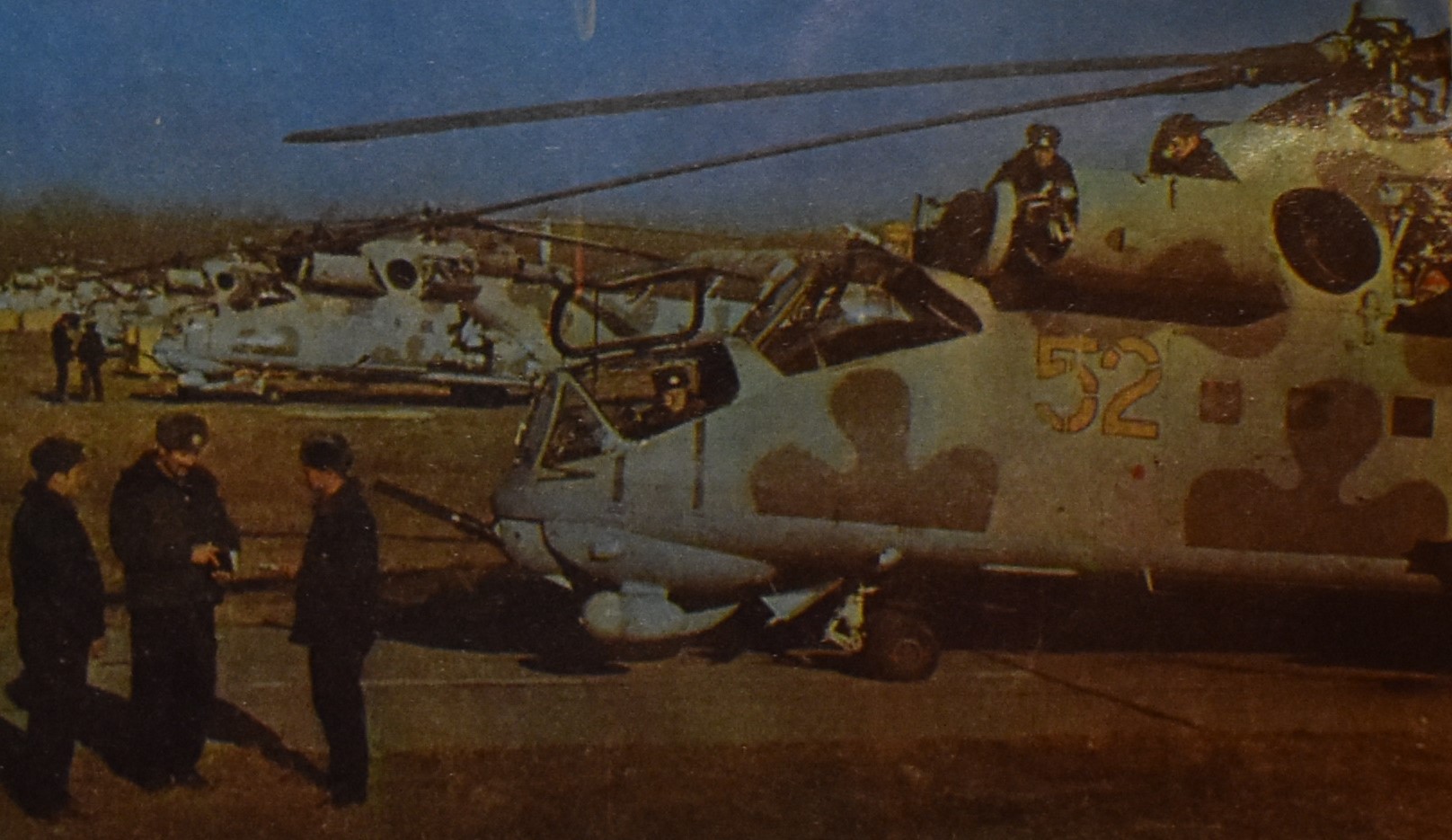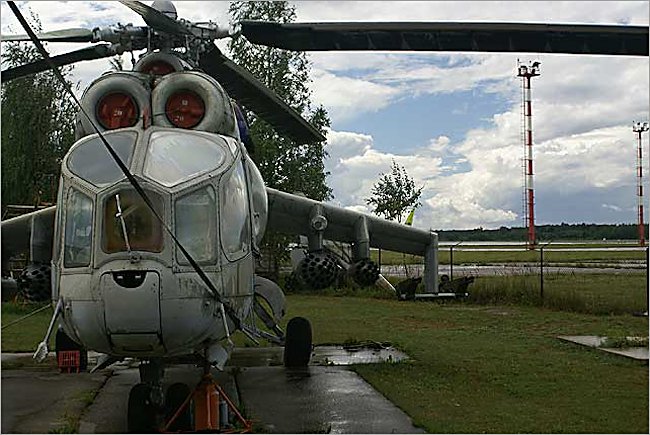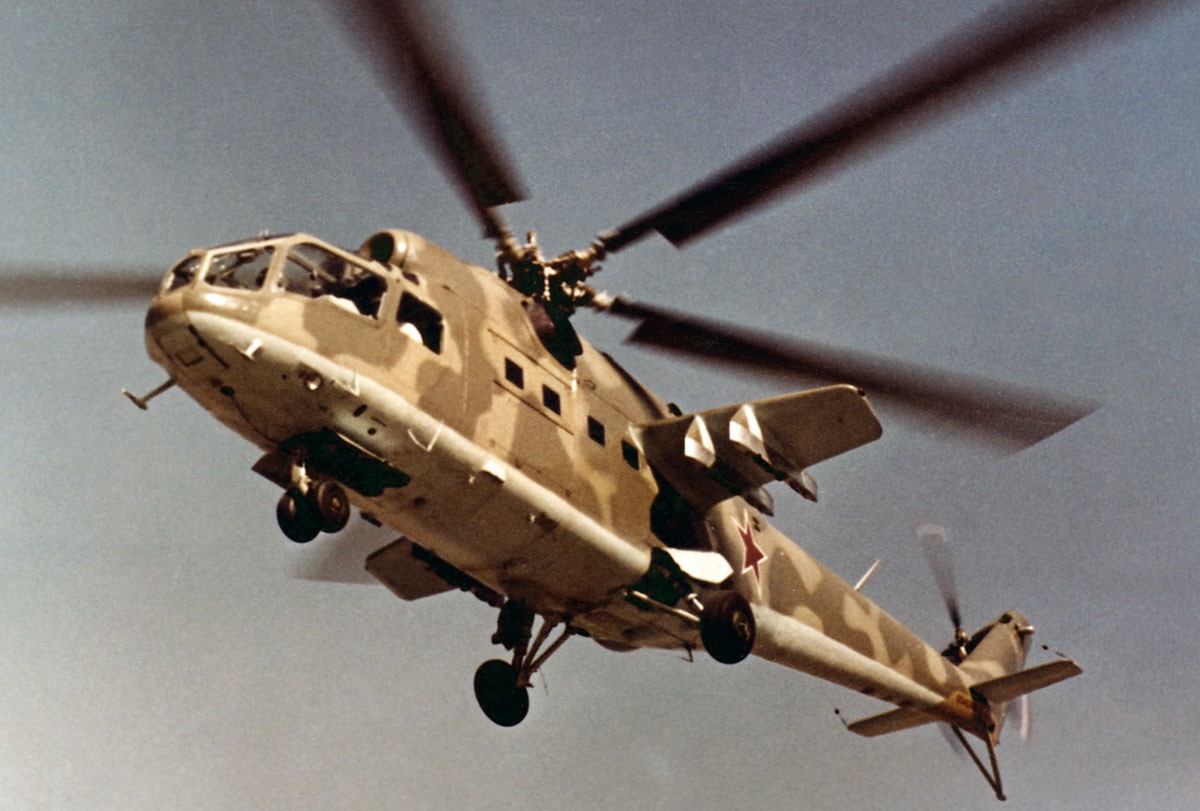Mil Mi-24/25/35, NATO reporting name Hind.
Russian news media propaganda report on Mi-24P (30mm guns) and Ka-52 action in Ukraine, October 2022:
In August 2022, Russia revoked licensed Mil helicopter operations for NATO-Czech Republic and NATO-Bulgaria, after they donated Hinds to Ukraine.
In August 2022, Brazil flew its 12 Mi-35M4s for the last time, officially. Brazil calls its Hinds the AH-2 Saber. Brazil has been operating Saber-Hinds since at least 2011. Local news media reports say the high cost of maintaining them was exacerbated by recent U.S./NATO sanctions on Russia.
Video from June 2022, Russian ‘Z’ Hinds (Mi-35M, with 23mm guns in the chin-turret), somewhere over Ukraine:
In May 2022, NATO Czech republic claims to have given Ukraine some of their Mi-24Vs.
March 2022: 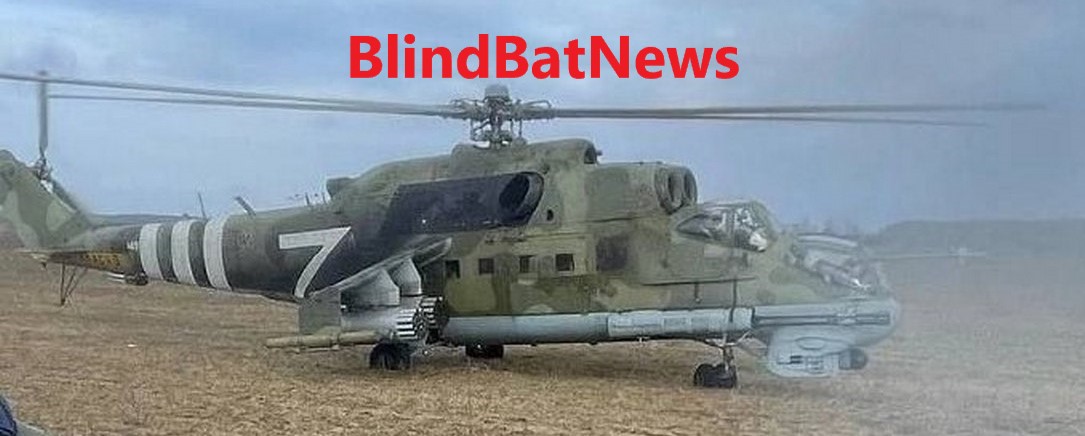 Hinds with invasion stripes?
Hinds with invasion stripes?
In December 2021, a video appeared claiming to show rebels in Yemen now have a usable Hind helicopter:
#مأرب
فيديو متدوال عن مشاركة طائرات هيلوكبتر عمودية تابعة لقوات صنعاء في معارك جنوب #مأرب. pic.twitter.com/XWMmogXOsT— ساعة الصفر (@zero_hour2020) December 7, 2021
In August 2021, Taliban took control of donated Mi-35 helicopters, after the sudden withdrawal of U.S./NATO forces from Afghanistan. See more about the more than four decades long love affair the Afghans have for ‘Satan’s Chariot’ in ZOMBIE ‘COPTER: HOW THE HIND RETURNED TO AFGHANISTAN (with the help of NATO), AND WHY IT WON’T DIE.
In June 2021, U.S. Army AH-64 Apaches and NATO-Bulgarian Hinds took part in a joint Apache-Hind wargame, supposedly for the first time.
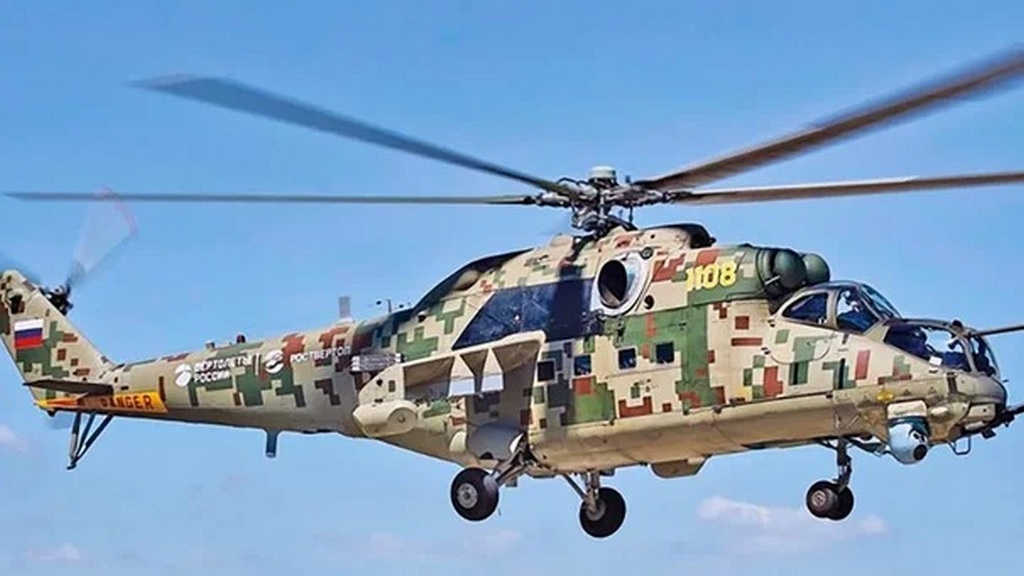 In August 2020, Rostec State Corporation’s Russian Helicopters division announced it will begin mass-production of its new export Hind, the Mi-35P.
In August 2020, Rostec State Corporation’s Russian Helicopters division announced it will begin mass-production of its new export Hind, the Mi-35P.
At the beginning of August 2020, Belarus claimed that NATO-Lithuania invaded its territory. The ‘invasion’ was stopped with the help of Belarusian Mi-24s.
In June 2020, Kazakhstan received four new-build Mi-35Ms. Kazakhstan now has 12 Mi-35Ms.
In April 2020, it was reported that an Mi-35, used by the ‘Haftar’ forces in Libya, was shot down, the crew was killed. It should be noted that the Haftar forces (aka Libyan National Forces) are supported by both Russia and NATO-France! The 2011 NATO instigated civil war in Libya never ended!
Mil (Mil Moscow Helicopter Plant) 24 gunship flies over Ryan Airfield, Arizona, 20NOV2019.
The U.S. Air Force claims it is using the Mil 24 to teach basic helicopter maneuver training to SAR (Search And Rescue) HH-60G Pave Hawk crews.
Mil 24 parked next to HH-60G Pave Hawk, Davis Monthan Air Force Base, Arizona.
In August 2019, Russia announced it is upgrading its Mi-24Ps to Mi-24P1M standards.
The Mi-24P1M will have the latest electronics, including an anti-aircraft missile launch warning system. The ‘1M’ version will also be several hundred kilograms lighter in weight.
In the NATO ‘west’, export versions of Mil 24 are also known as Mil 25 or 35, depending on the accessories (or who is writing the report).
Polish Mil 24 picks up NATO troops during Frozen Fury wargame, March 2018.
Polish Mil 24s swarm a NATO battlefield, January 2018.
Russia flies Mi-24s in the NATO-instigated-civil-war-torn country of Syria.
Ukrainian Mil 24, over Kulbakino Air Base in Mykolaiv, during NATO/U.S. Sea Breeze wargame, July 2017.
U.S. Army video by Sergeant Timothy Pike, soldier’s view of Mi-24 Hind-D during NATO wargame on Hohenfels, Germany, March 2017:
Maintenance on Czech Mil 24 on Hohenfels, Germany, for Exercise Allied Spirit, March 2017.
Mil 24 over Chocolate Mountain Aerial Gunnery Range, California, April 2016, in support of U.S. Marine Aviation Weapons and Tactics Squadron One (MAWTS-1) during Weapons and Tactics Instructor (WTI) training.
Video, Mil 24 Hinds in action, Syria, October 2015:
#RuAF Mi-24 Hind gunships providing CAS to #Syria regime troops #Sahl_al_Ghab #Latakia #RussianAirStrikes pic.twitter.com/mUfPnfmyia
— Independist-R2D2 (@Independist) October 12, 2015
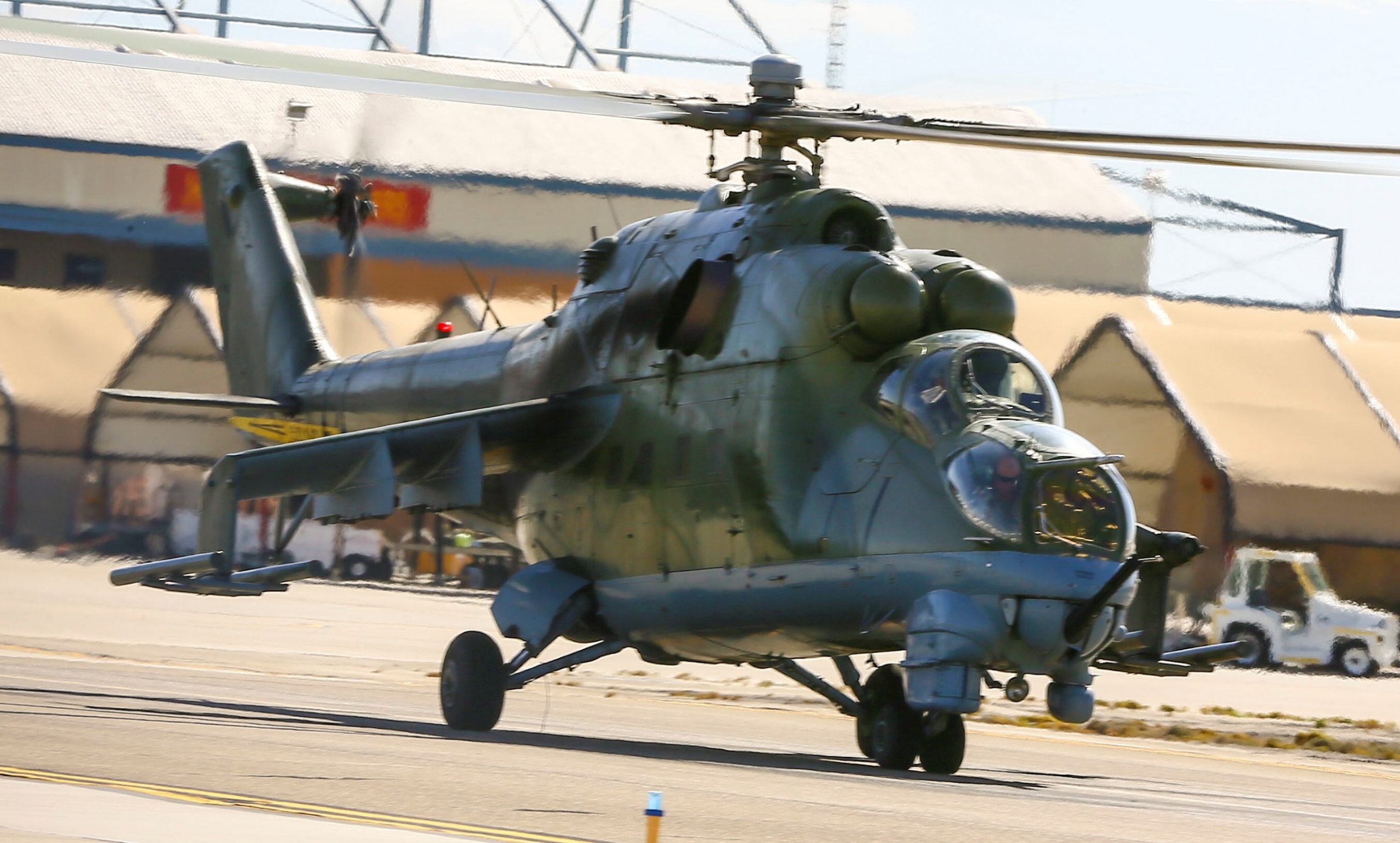
Mi-24 Hind-D onboard Yuma Marine Corps Air Station, Arizona. U.S. Marine Corps photo by Staff Sergeant Artur Shvartsberg, 09OCT2015.
U.S. Marine Corps Air Station Yuma, Arizona, October 2015.
NATO video from 2014, Afghans deploy their Mil 24 and Mil 17 (171):
The Mil 24 is called Hind by NATO, there is no official name in Russia but crews have used many nicknames for it. In Afghanistan it’s known as Satan’s Chariot. NATO video report from 2012:
NATO-Poland Mil 24 in Iraq, Camp Echo, January 2008.
NATO-Poland’s old Hind-D over Ad Diwaniyah, Iraq, January 2008.
NATO-Poland Mil 24 and U.S. Apache AH-64 working together, somewhere in Iraq, May 2006.
The above photo shows three Mi-24 Hind-Ds, of the newly independent Czech Republic (now known as Czechia), attending an air show in NATO-Italy, July 1996. The Czech Republic joined NATO in 1999.
 The U.S. Army captured an almost intact Iraqi Hind-D, during Desert Storm, January 1991.
The U.S. Army captured an almost intact Iraqi Hind-D, during Desert Storm, January 1991.
The U.S. Army first started flying the Mil 24 in the early 1990s, after French and Chadian forces seized an abandoned Libyan Mil 25 Hind-D in 1987. The helicopter was flown to the U.S. onboard a C-5 Galaxy in 1988.
The Hind-D was based at Fort Bliss, Texas. It was routinely deployed to Fork Polk, Louisiana, to play the part of the enemy, or Opposition Force (OpFor) in wargames.
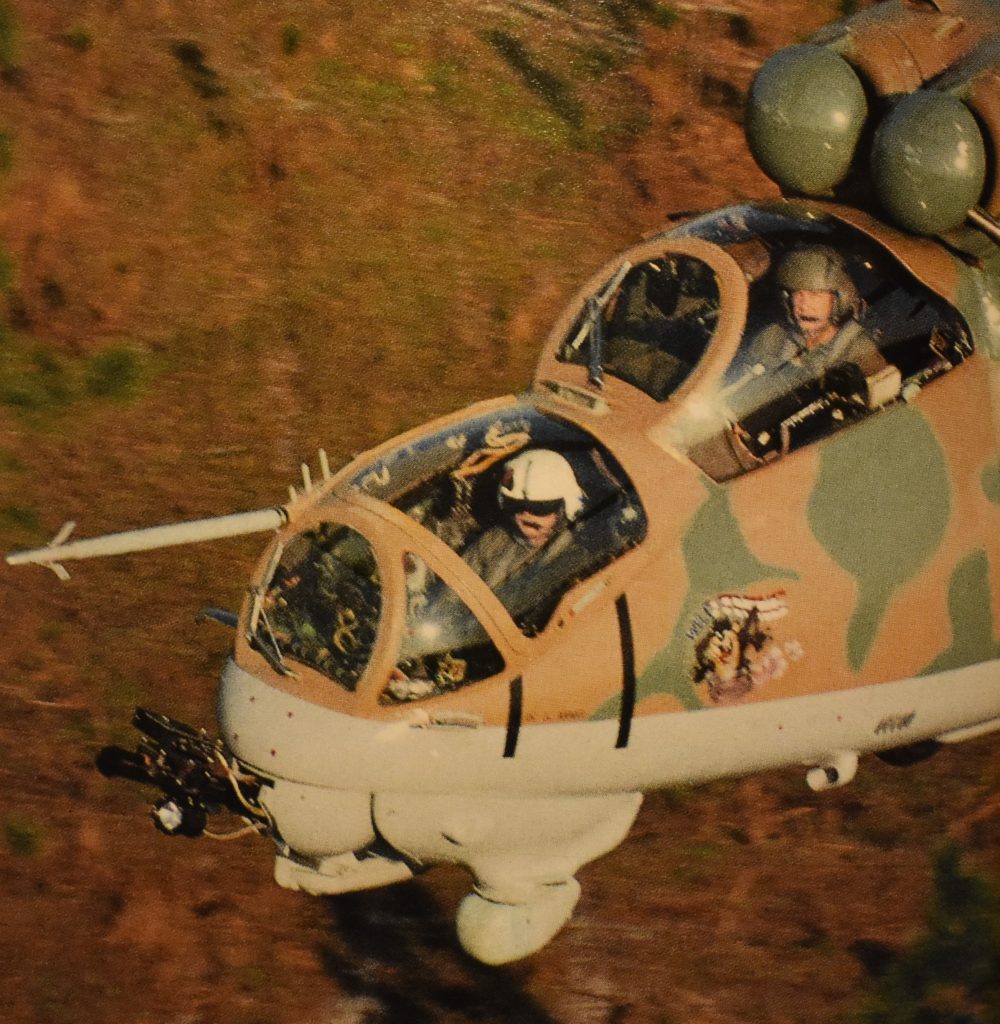 This 1995 U.S. Army photo shows the Hind-D equipped with Multiple Integrated Laser Engagement Systems (MILES) ‘laser-tag’ wargame device on the chin-gun. It has Tasmanian Devil nose art.
This 1995 U.S. Army photo shows the Hind-D equipped with Multiple Integrated Laser Engagement Systems (MILES) ‘laser-tag’ wargame device on the chin-gun. It has Tasmanian Devil nose art.
Beginning in the early 1980s, the U.S. Army used Huey helicopters to represent Hinds!
The above photo was made in July 1988, but was not released to the U.S. public until 27APR1989.
These Hinds had a four-barreled 12.7mm gun in a chin-turret.
The Hind-A had a single-barreled 12.7mm heavy machine gun in the nose.
The first production version of the Hind, sometimes called the Drinking Glass, Mi-24A Hind-A. Riga Airport Latvia Russian Aircraft Museum, in NATO-Latvia.
In 1968 the Soviet Union ordered a new helicopter, combining transport and gunship capabilities. By June 1970, what would become the Mil 24 was accepted for testing. The Mil 24A officially began service in 1972.
VEHICLE I-D: 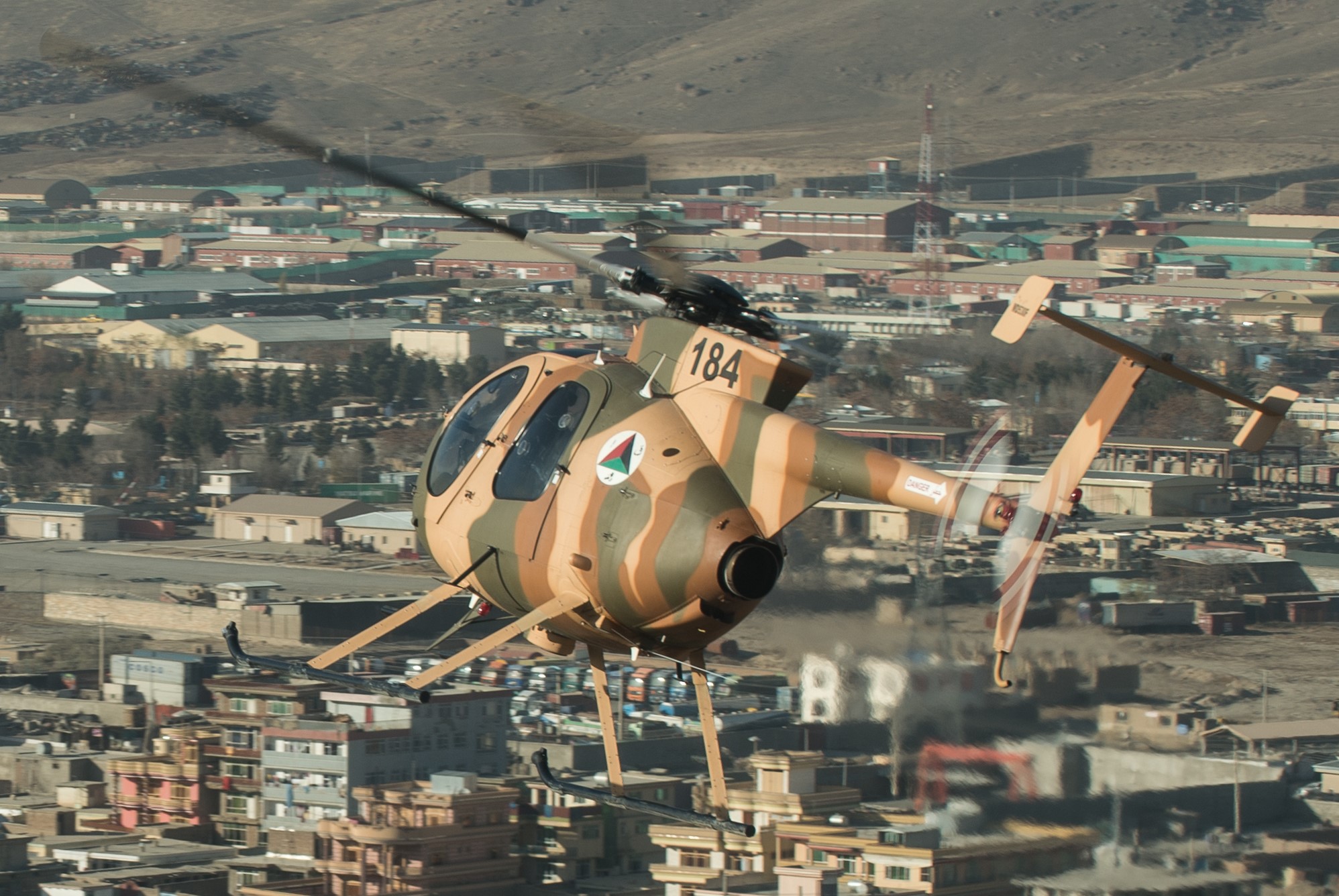 MD-530F CAYUSE WARRIOR, AFGHANISTAN
MD-530F CAYUSE WARRIOR, AFGHANISTAN
 HOW TO USE C-4 & THERMITE TO KILL A ZOMBIE TANK
HOW TO USE C-4 & THERMITE TO KILL A ZOMBIE TANK

